Agronomy Research Projects
Contact
Anuj Chiluwal, Ph.D.
Assistant Professor of Agronomy
College of Agriculture, Health, and Natural Resources
Atwood Research Facility
Office 123, Lab 205B
400 East Main St.
Frankfort, KY 40601
Contact:
Phone: (502) 597-5993
Email:
anuj.chiluwal@kysu.edu
Current Research Projects
(Lead researcher – Deepak Khatri)
The declining soybean seed protein concentration in modern high-yielding cultivars is becoming a significant concern for soybean growers and industry. Studies have suggested N limitation during seed filling period is the major reason for the declining soybean seed protein concentration. Hence, supplemental N fertilization during seed filling period is essential to avoid the limitations and improve seed protein concentration. However, the optimal dose of late season N fertilization is still unknown. Hence, this study aims to optimize late season N fertilization doses in different maturity groups soybean cultivars. We are conducting multiple field experiments testing different doses of late season N fertilization to identify the optimal late season N fertilization dose which can effectively improve soybean seed protein concentration.
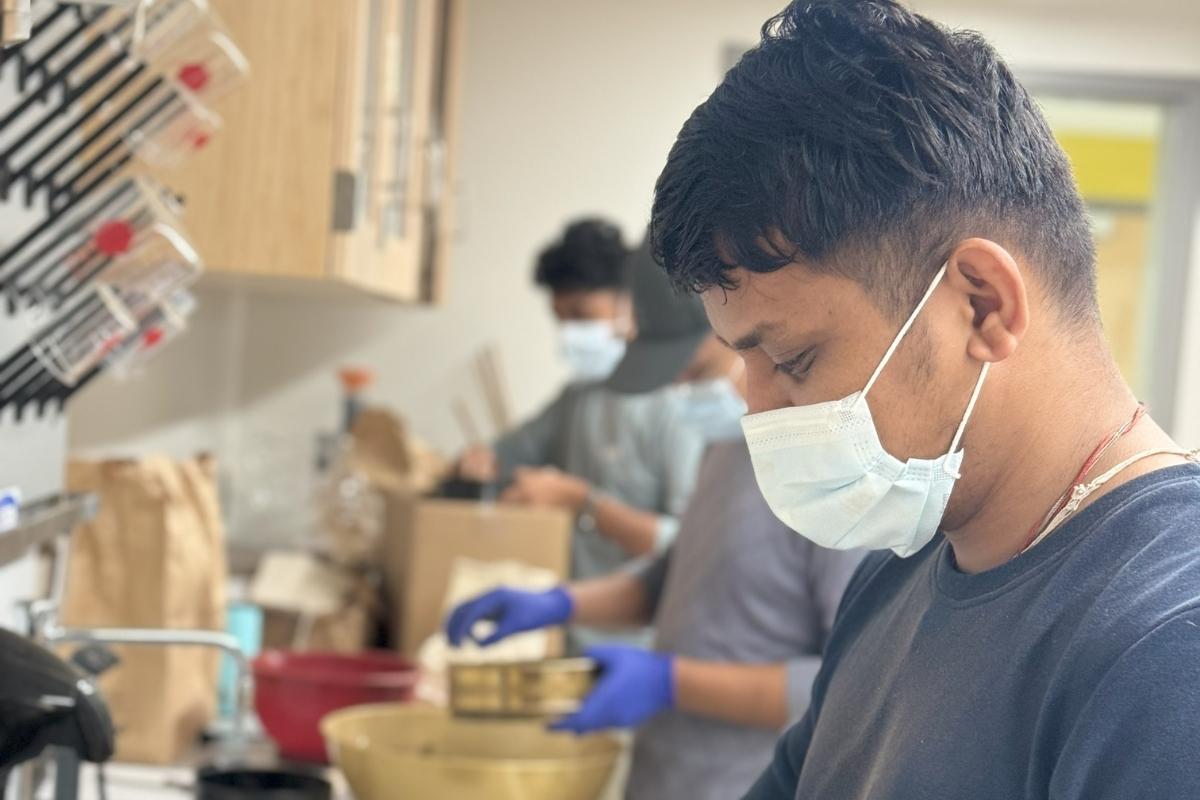
Agronomy lab crew cleaning seed for further lab test
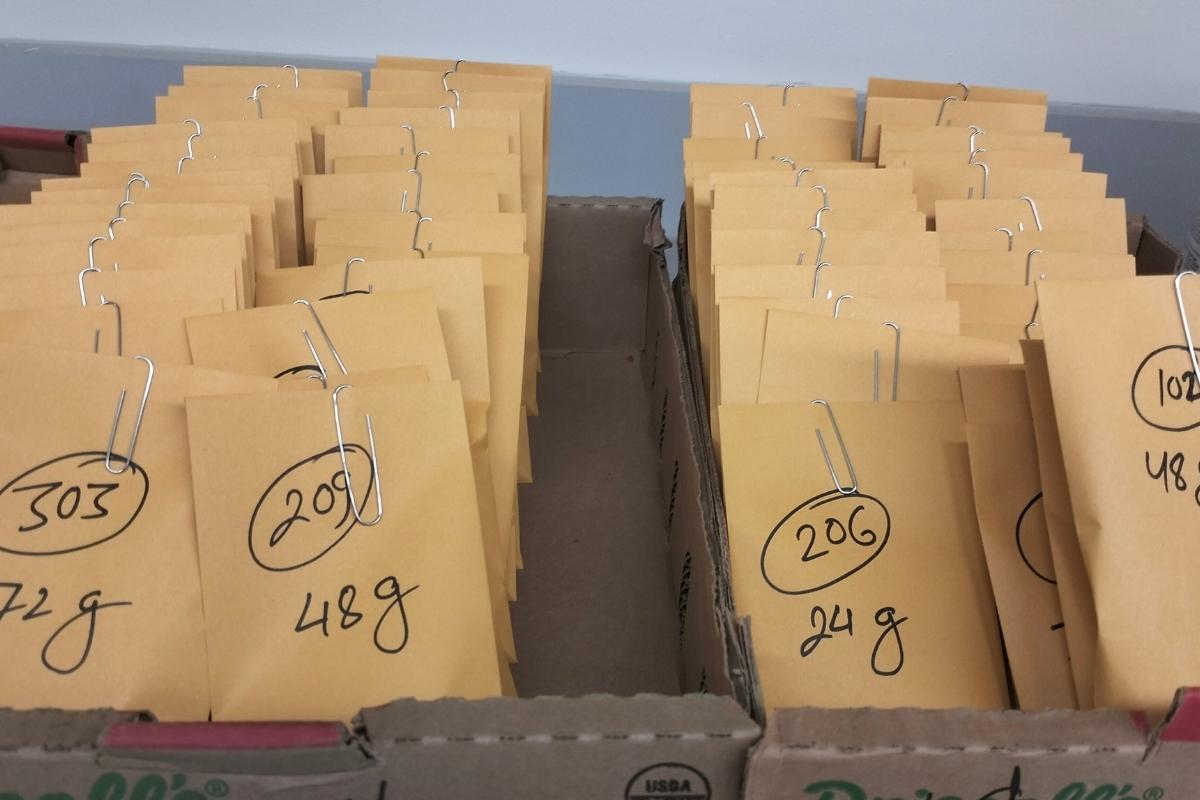
Fertilization package ready for late season N application
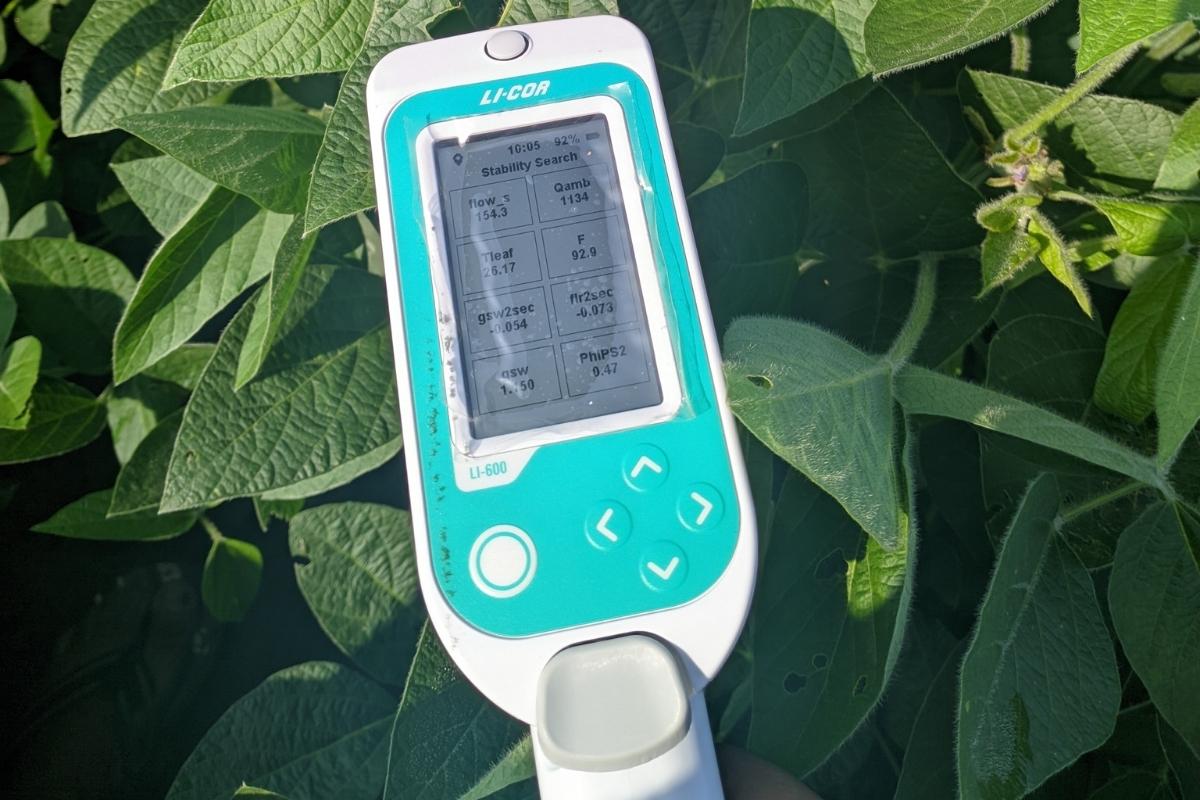
Li-600 measuring stomatal conductance and chlorophyll fluorescence
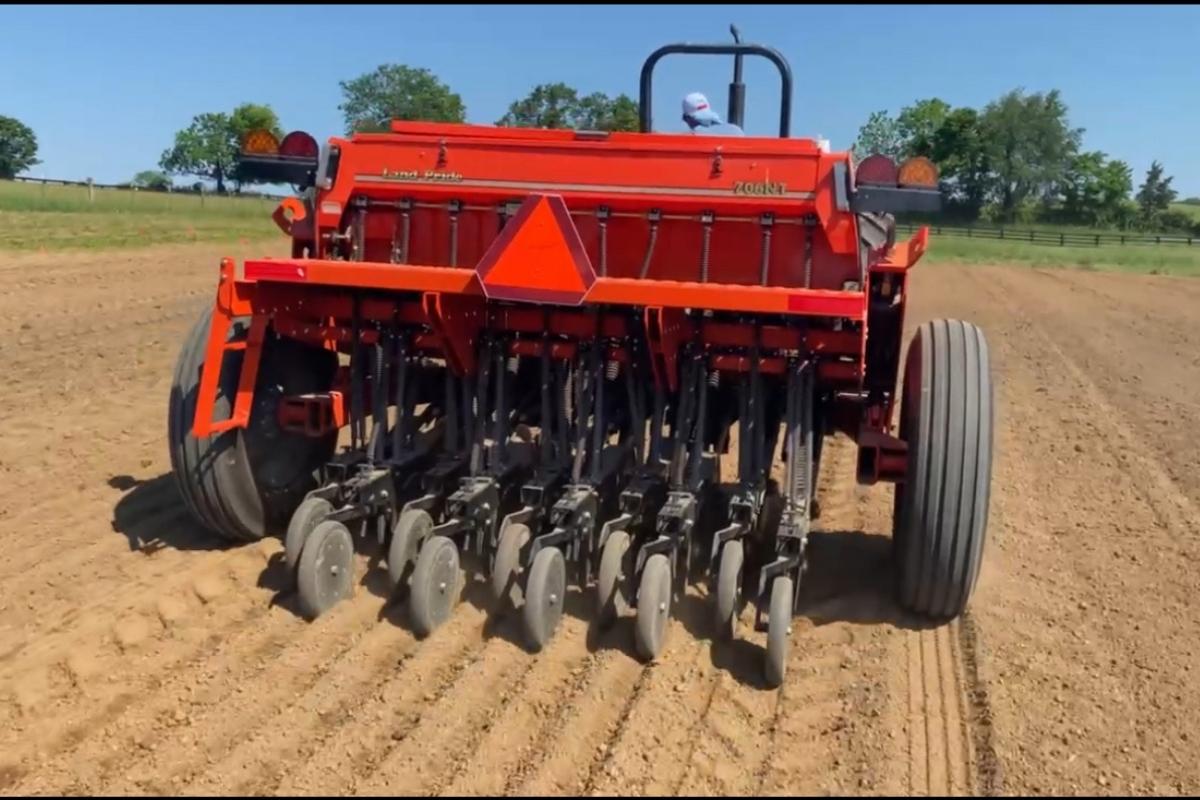
Soybean at early growing stage
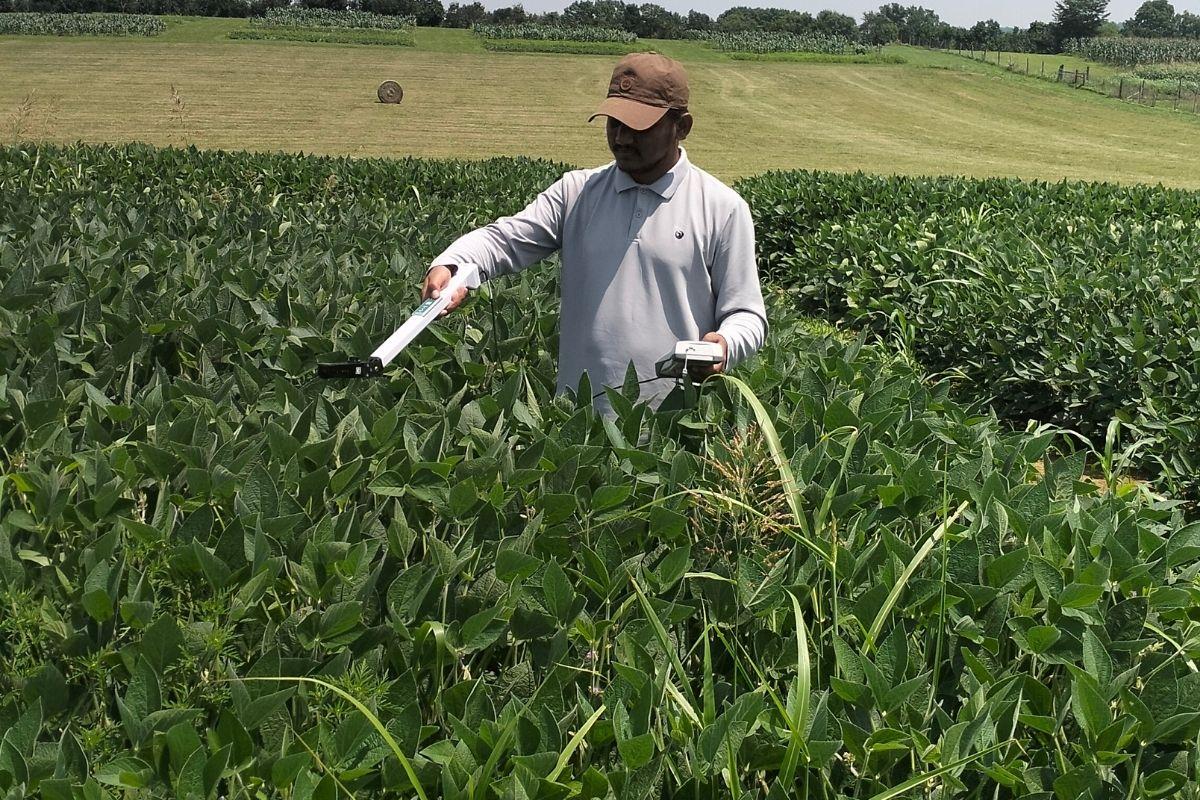
Deepak measuring LAI using LAI-2200C Plant Canopy Analyzer
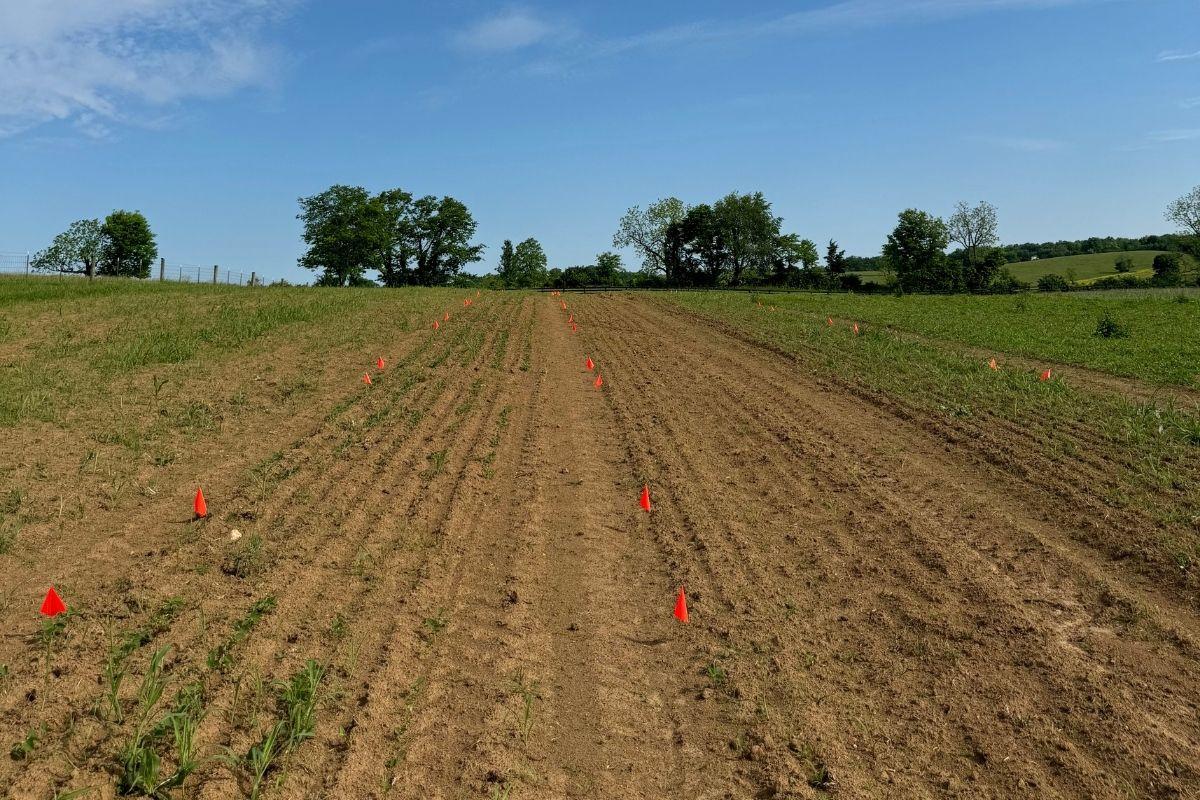
Soybean at early growing stage
(Lead Researcher – Manish Pandit)
This project focuses on optimizing the timing of supplemental N applications to enhance soybean seed protein concentration. The declining protein concentration trend has become a key challenge in modern high-yielding cultivars. Although soybean is capable of obtaining atmospheric N through biological nitrogen fixation, studies have shown that nitrogen limitation during seed filling stage often leads to a decline in seed protein concentration in modern high yielding cultivars. Hence, supplemental N fertilization is essential to address the limitation. However, the optimal time of supplemental N application is not known. Hence, we are testing supplemental N application during different soybean growth stages to identify the optimal time of supplemental N fertilization in soybean.
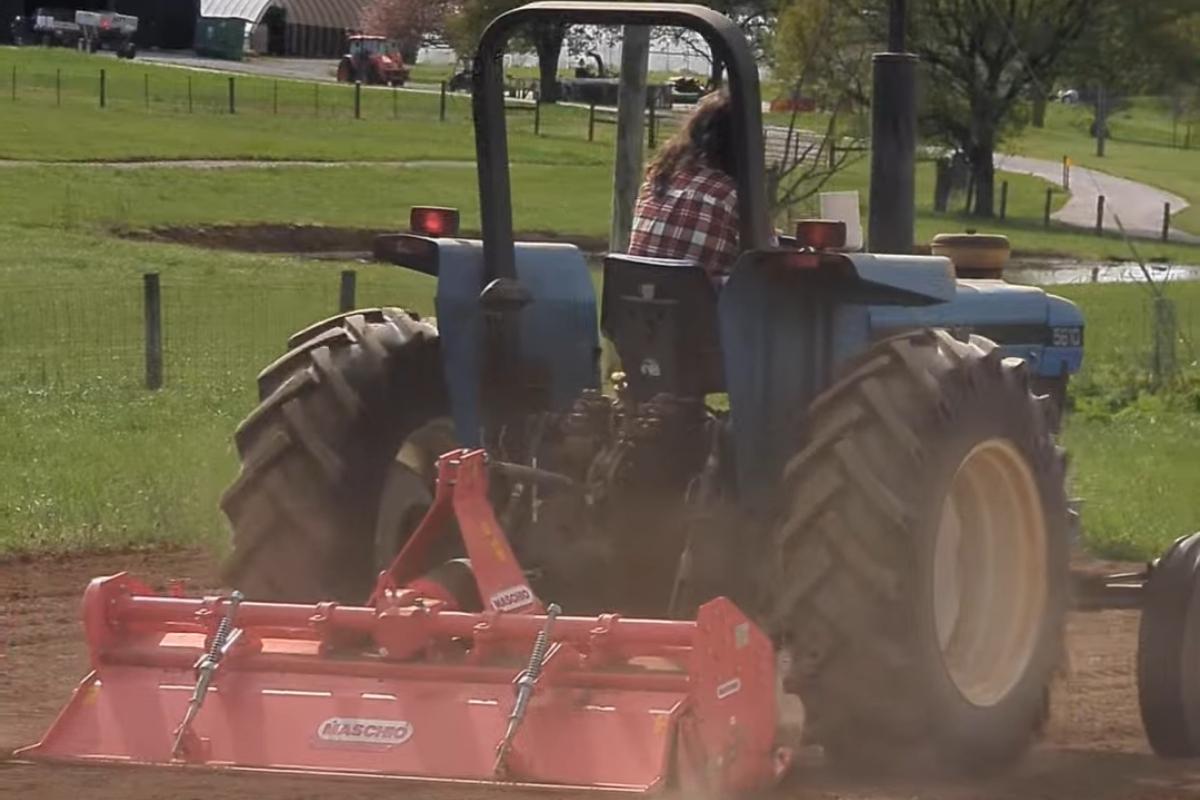
Field preparation for soybean plantation
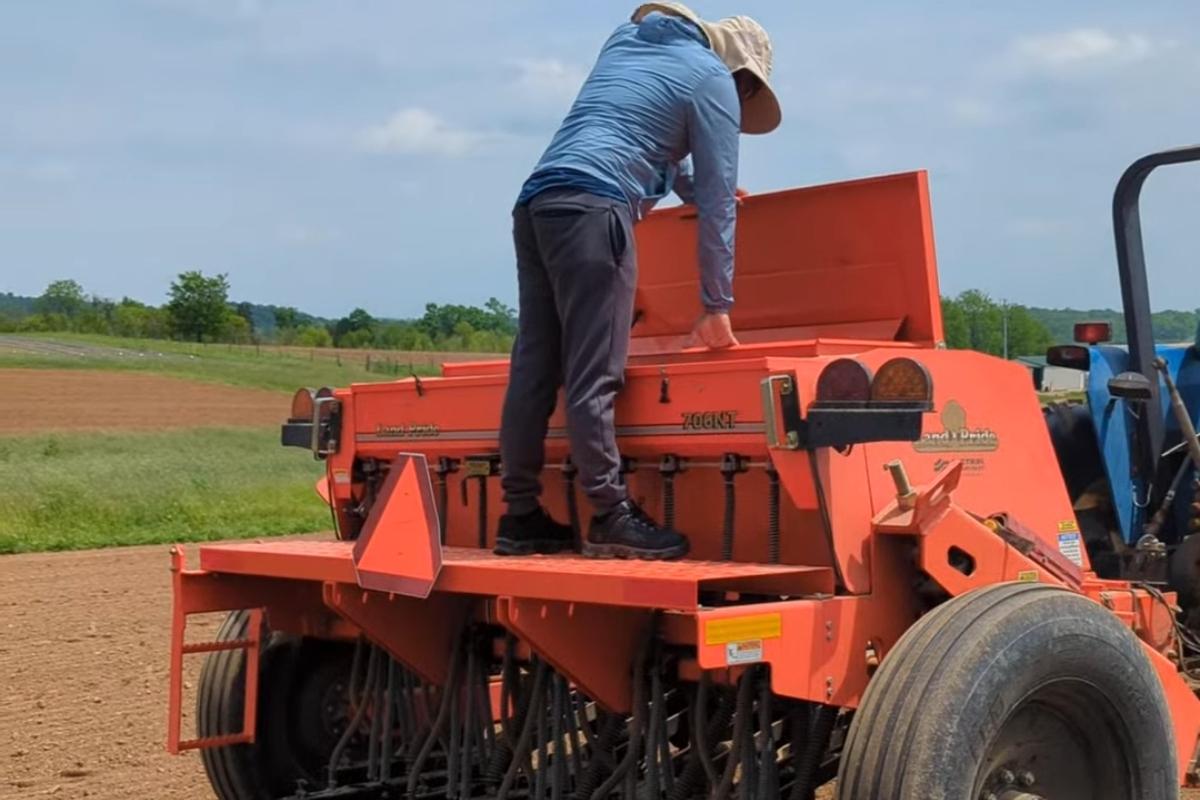
Soybean seed sowing
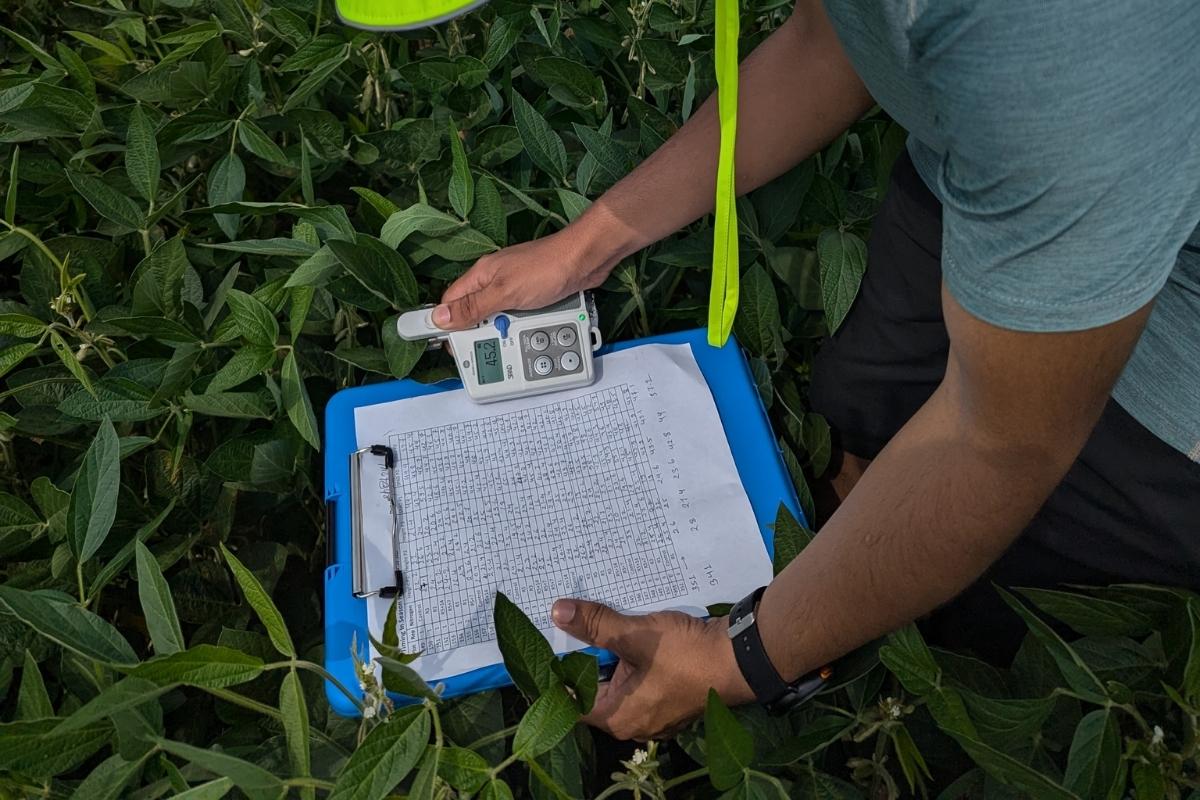
Field data collection using SPAD
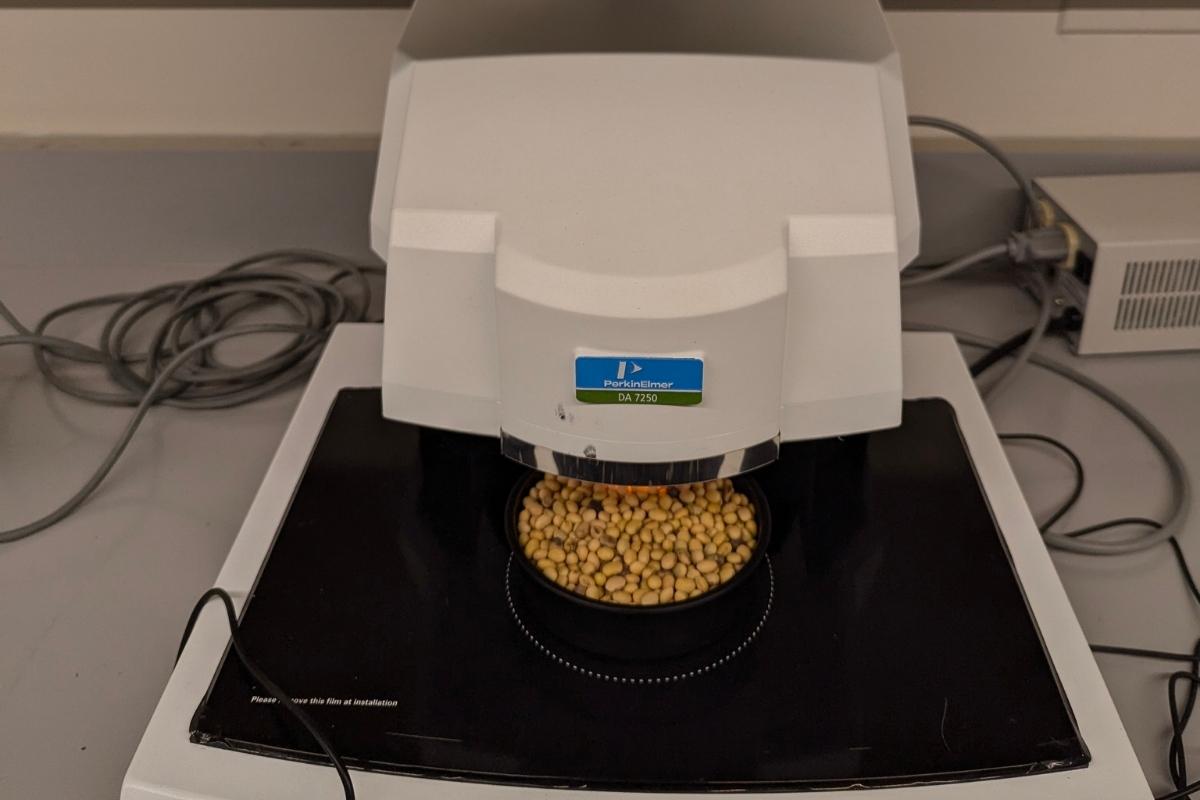
Soybean seeds being analyzed under DA7250 NIR Analyser
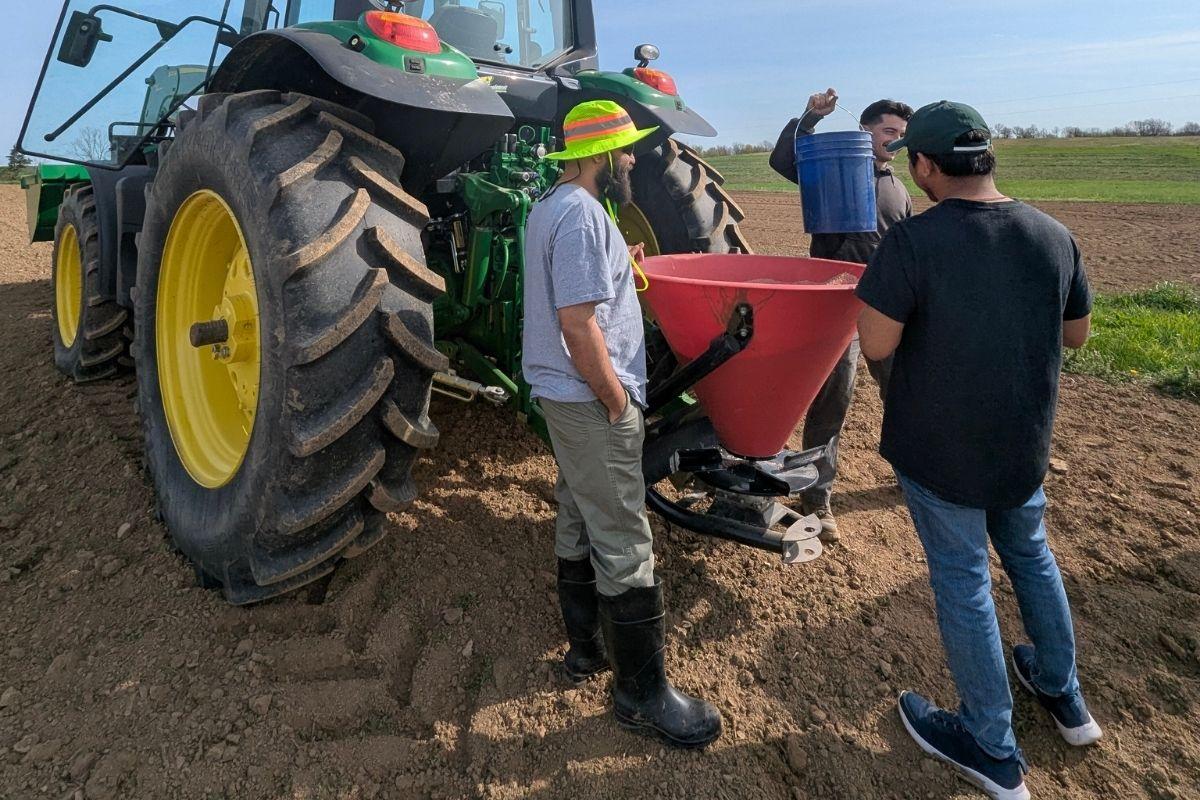
Nutrient application before cultivation
(Lead Researcher - Manish Pandit and Dashanta Gray)
Supplemental N application has emerged as a promising approach to improve soybean seed protein concentration. However, its impact on biological N fixation is not yet clearly understood. Majority of the nitrogen needs in soybean come from biological N fixation, which is the most efficient N source in soybean. Hence, it is important to provide additional N without significantly affecting soybean’s biological N fixation. This project aims to quantify the impact of different doses and timing of supplemental N fertilization on biological N fixation in soybean. We are using 15N natural abundance method to quantify the proportion of nitrogen derived from the biological nitrogen fixation under different doses and timing of supplemental N application. The method estimates biological N fixation by exploiting the natural 15N differences between soil and atmospheric nitrogen.
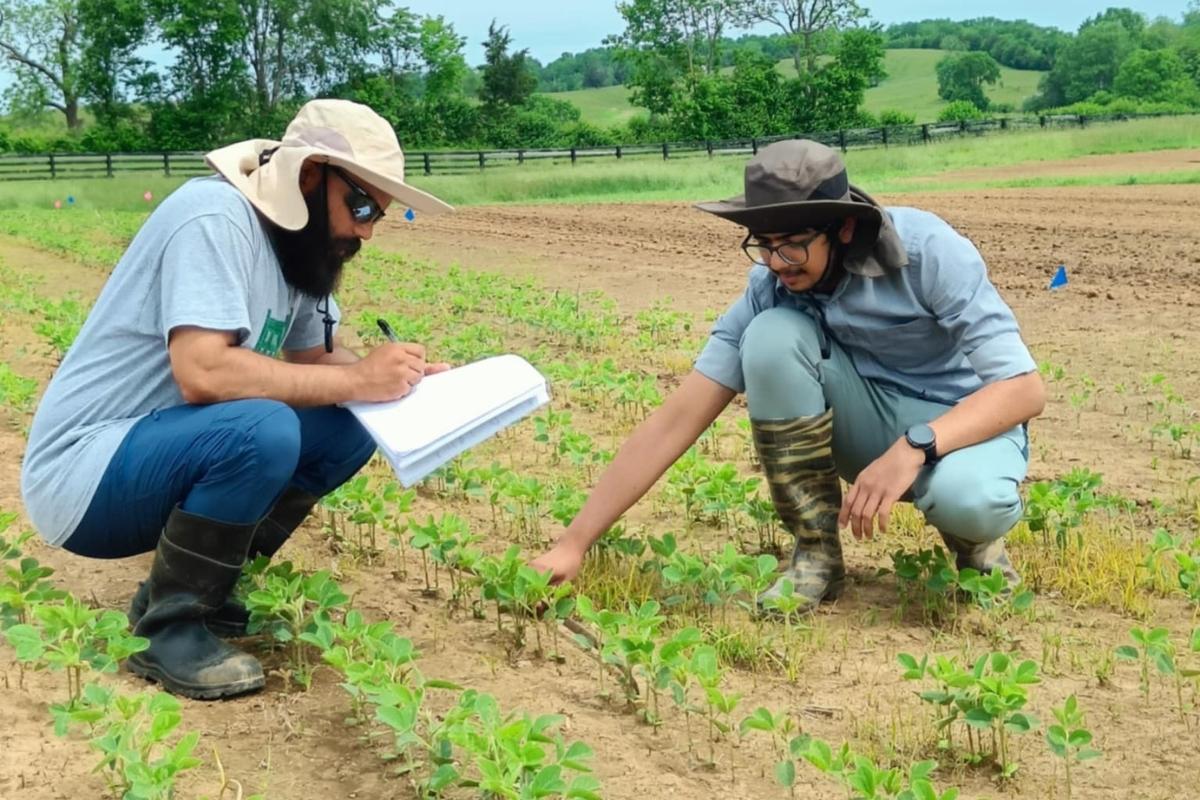
Anjan and Manish counting plant stand
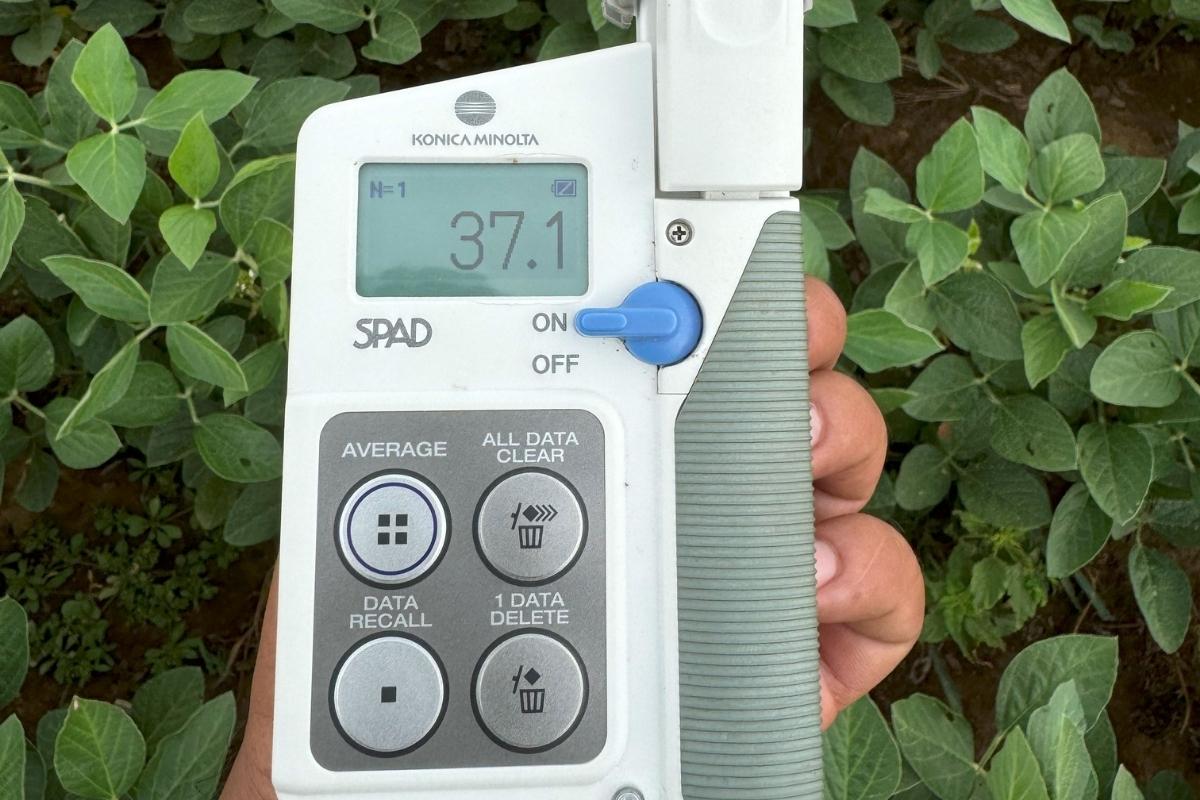
SPAD showing leaf nitrogen reading
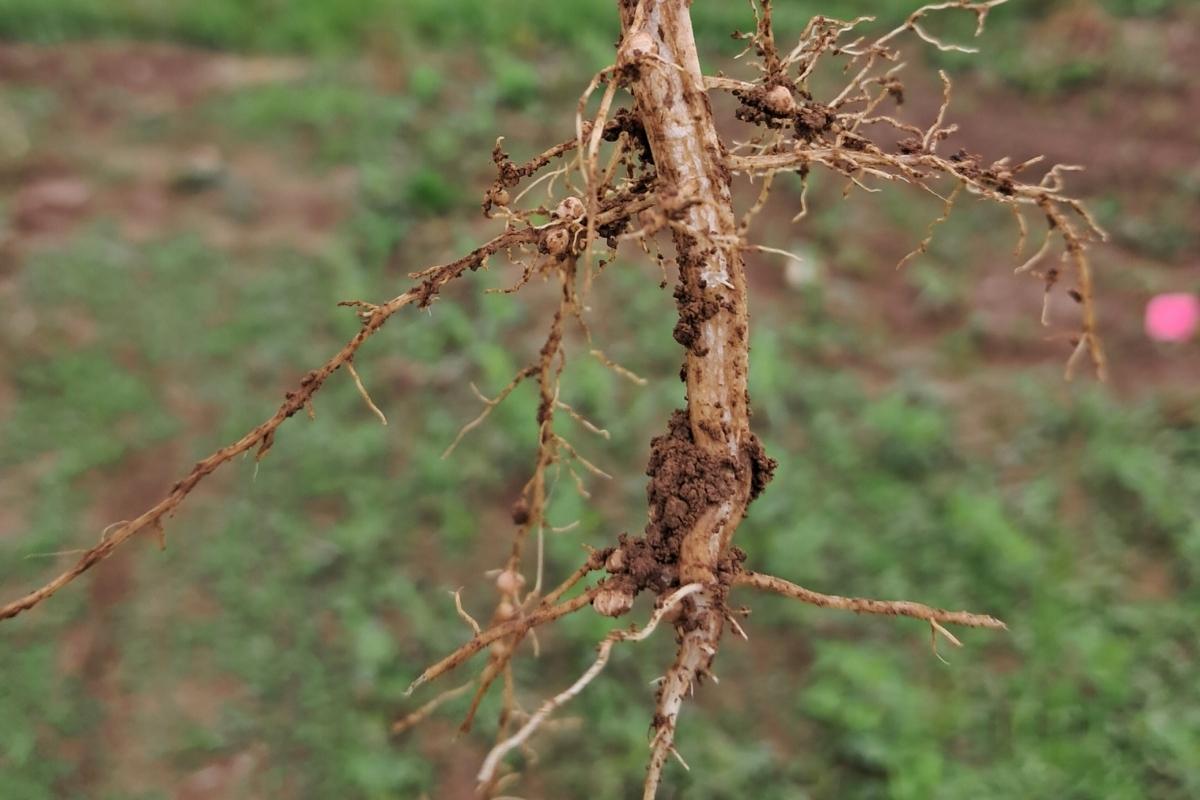
Soybean root and root nodules
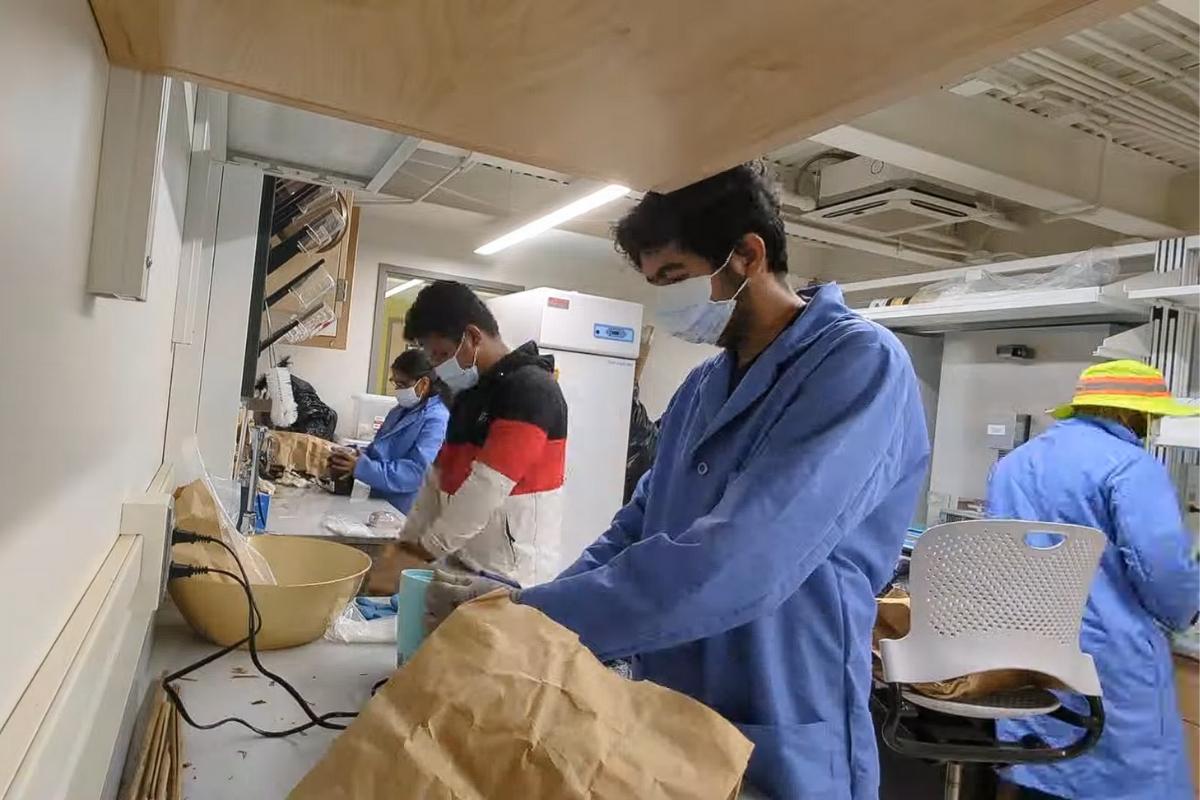
Lab members grinding plant biomass for nitrogen analysis
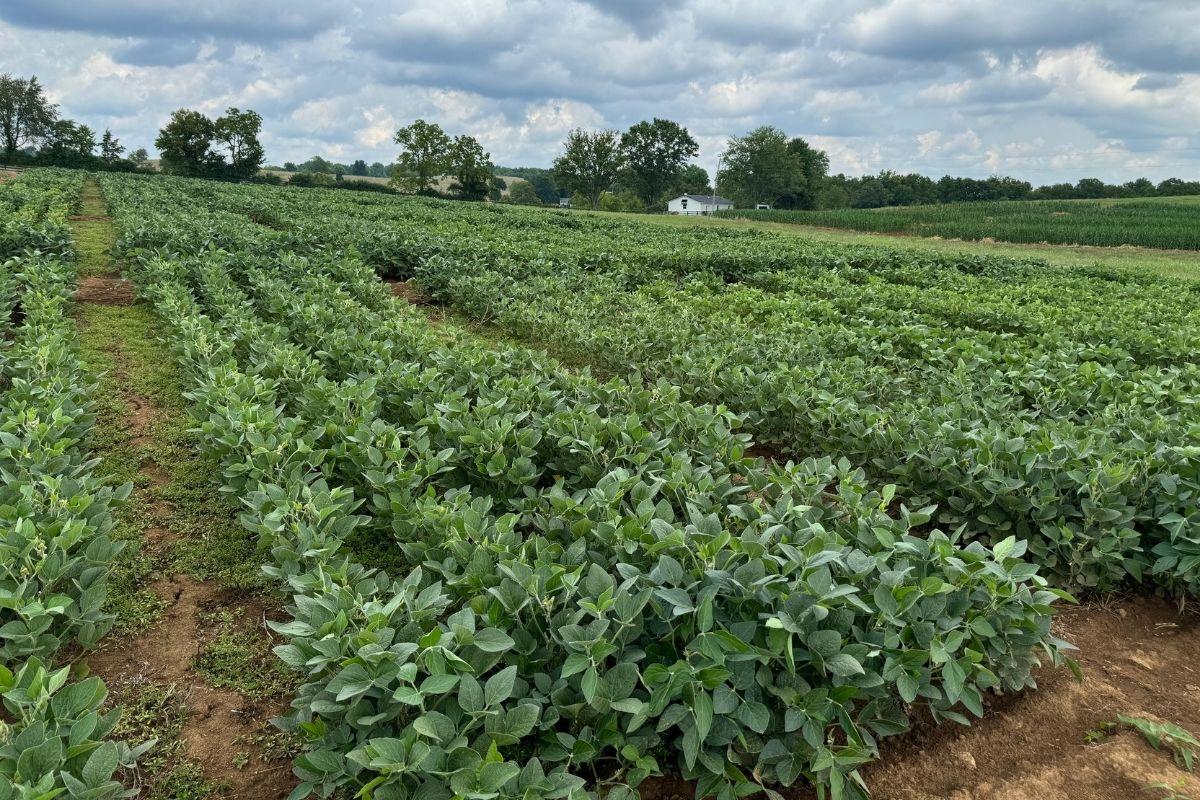
Plots with fully grown soybean
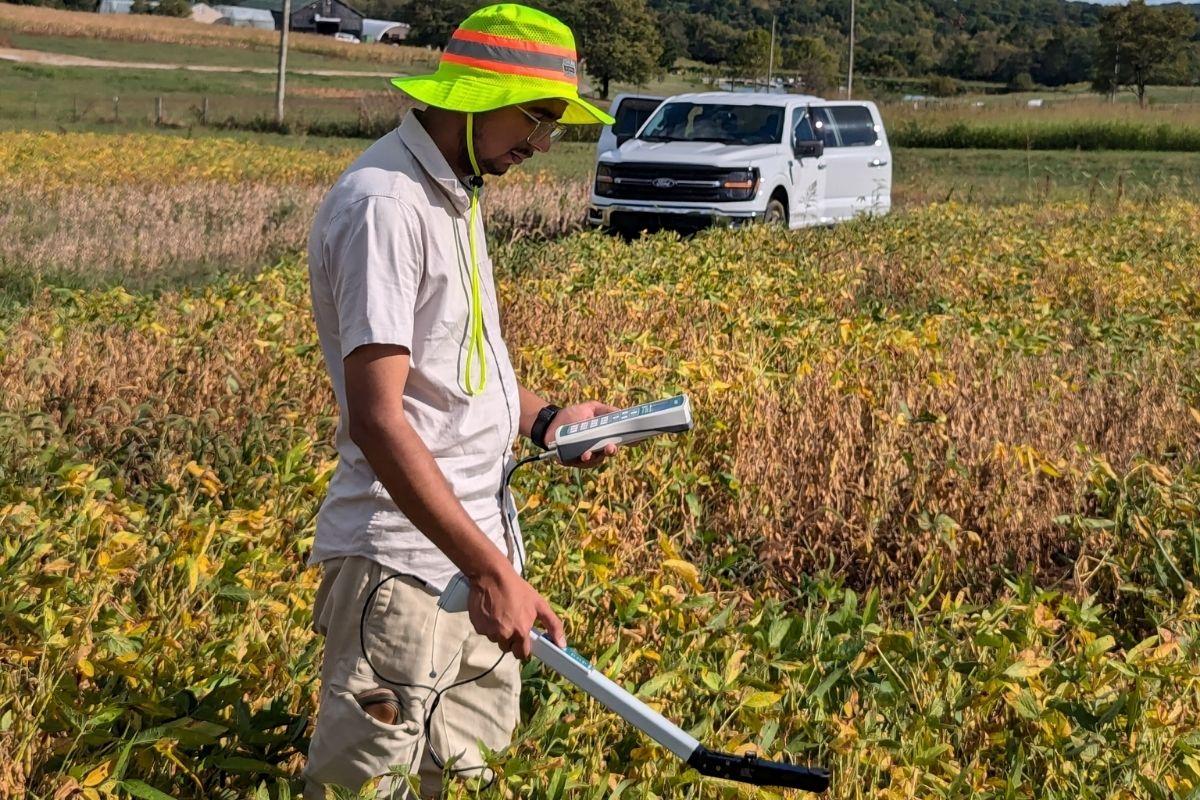
Manish measuring LAI using LAI 2200C PCA
(Lead Researcher - Sudip Poudel)
This project focuses on understanding soybean seed growth and composition dynamics under different assimilate availability. We are conducting multiple field experiments with increased and decreased photoassimilates supply across various soybean growth stages with different objectives as follows.
Identifying the seed size determining stage in soybean
This experiment focuses on determining the maximum seed size determination stage in soybean by identifying the stage upto which the soybean crop responds to increased assimilate supply. We are analyzing the temporal seed growth and composition dynamics of soybean under increased assimilate supply to sinks (growing pods) using pod-removal (depodding) technique to identify the stage when maximum seed size is determined in soybean. This study will also help identify the critical seed filling stage in soybean, which can be targeted with supplemental inputs to enhance yield and seed quality.
Identifying the most sensitive stage of the soybean under a decrease in assimilate supply
This experiment focuses on understanding the effects of decreased assimilated supply across different growth stages on soybean yield and related parameters. The experiment includes removal of leaves or source (defoliation) to reduce the assimilate or resources needed for pod and seed development. The study aims to identify the most sensitive growth stages of the soybean to reduced assimilates supply.
Pod dimensions determining stage of soybean under varying assimilate supply conditions
This experiment focuses on identifying the critical stage where the pod dimension traits (pod length, width, and volume) are determined in soybean. We are analyzing pod dimensions under both increased (via depodding) and decreased (via defoliation) assimilate supply conditions across different soybean growth stages.
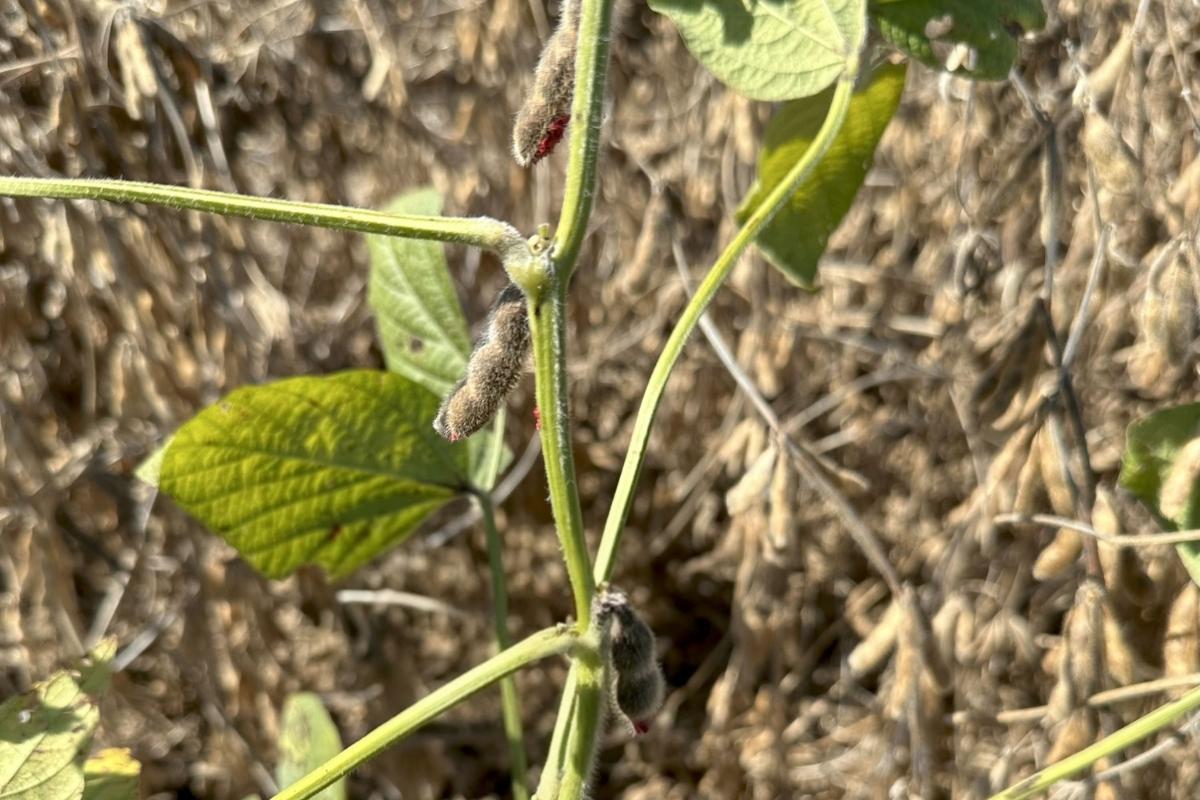
Morphological changes seen after source sink manipulation
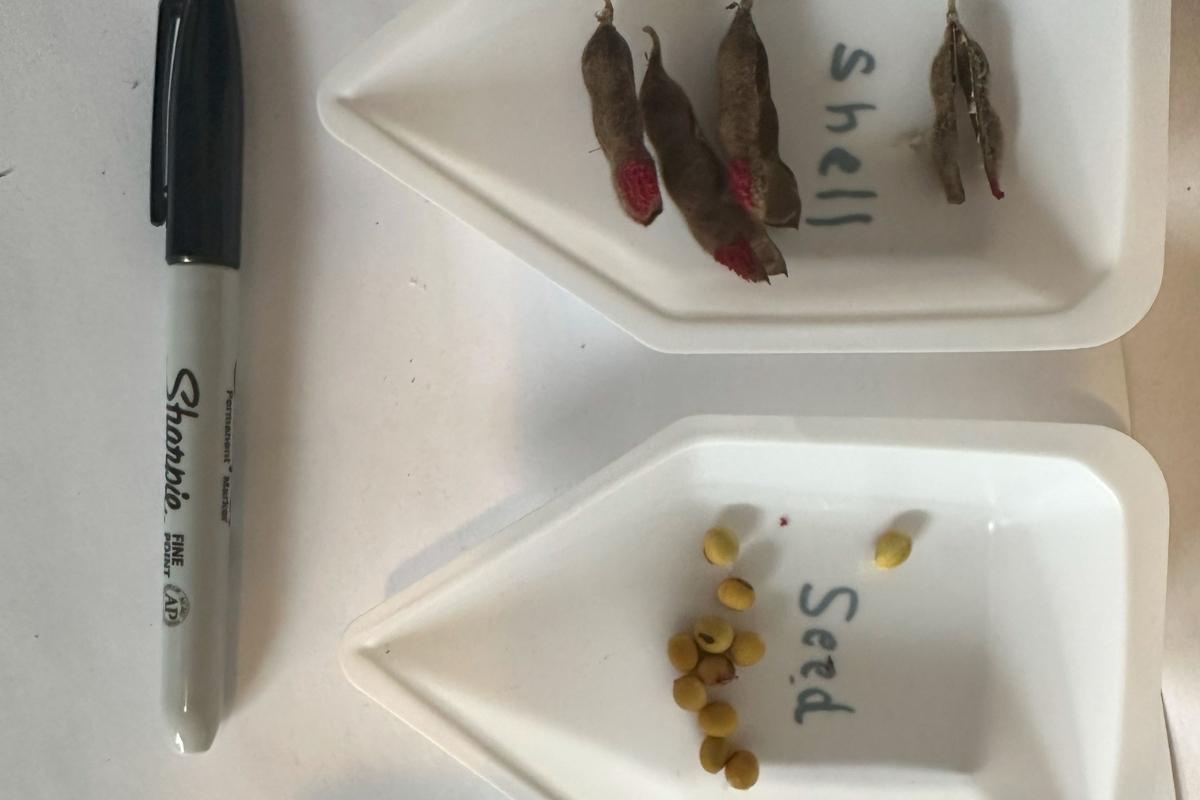
Seed and shell separated from pod
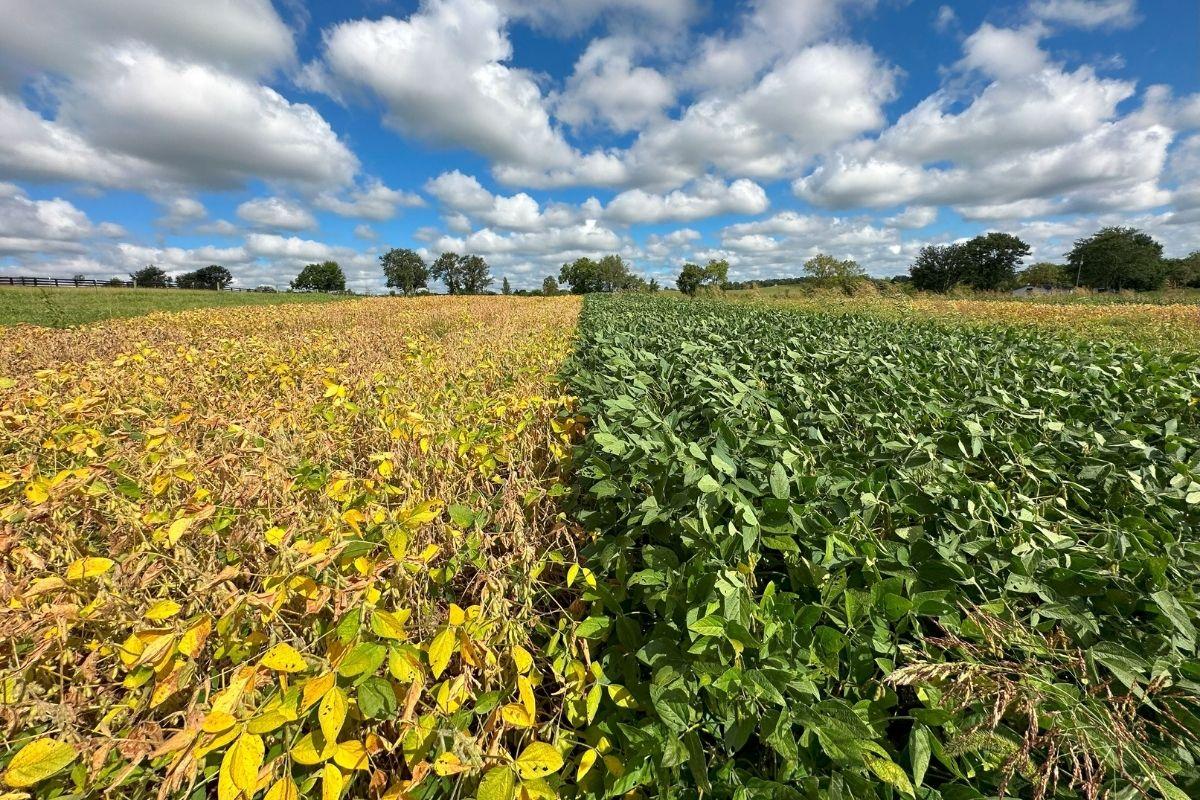
Leaf color changes between MG2 and MG4 cultivars
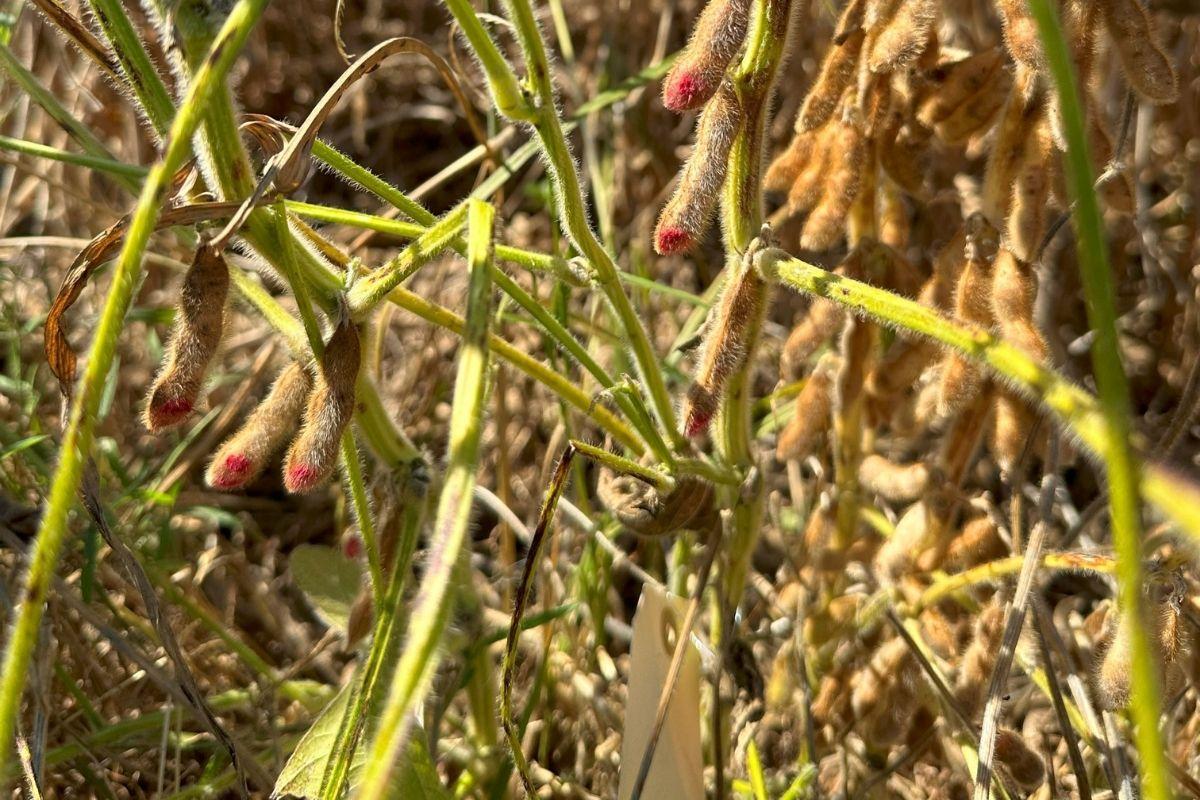
Pod painted for source sink manipulation experiment
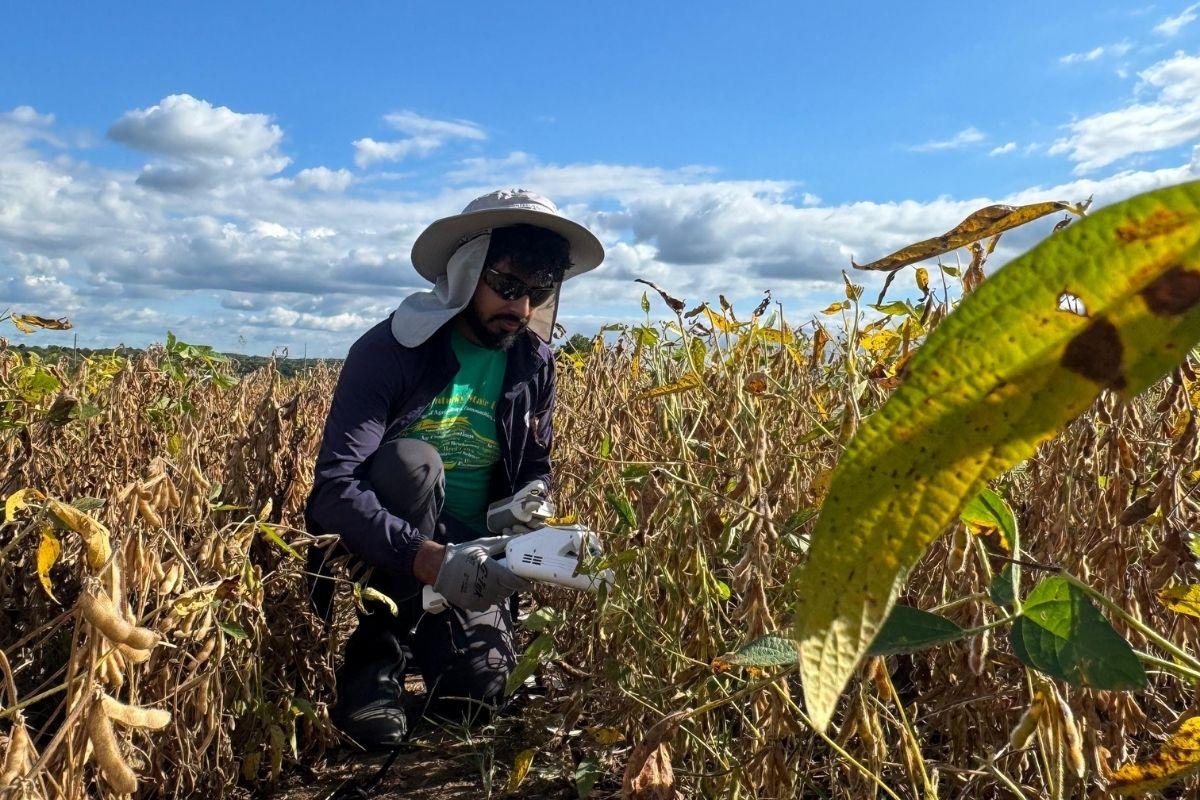
Sudip handling Li 600 for data recording
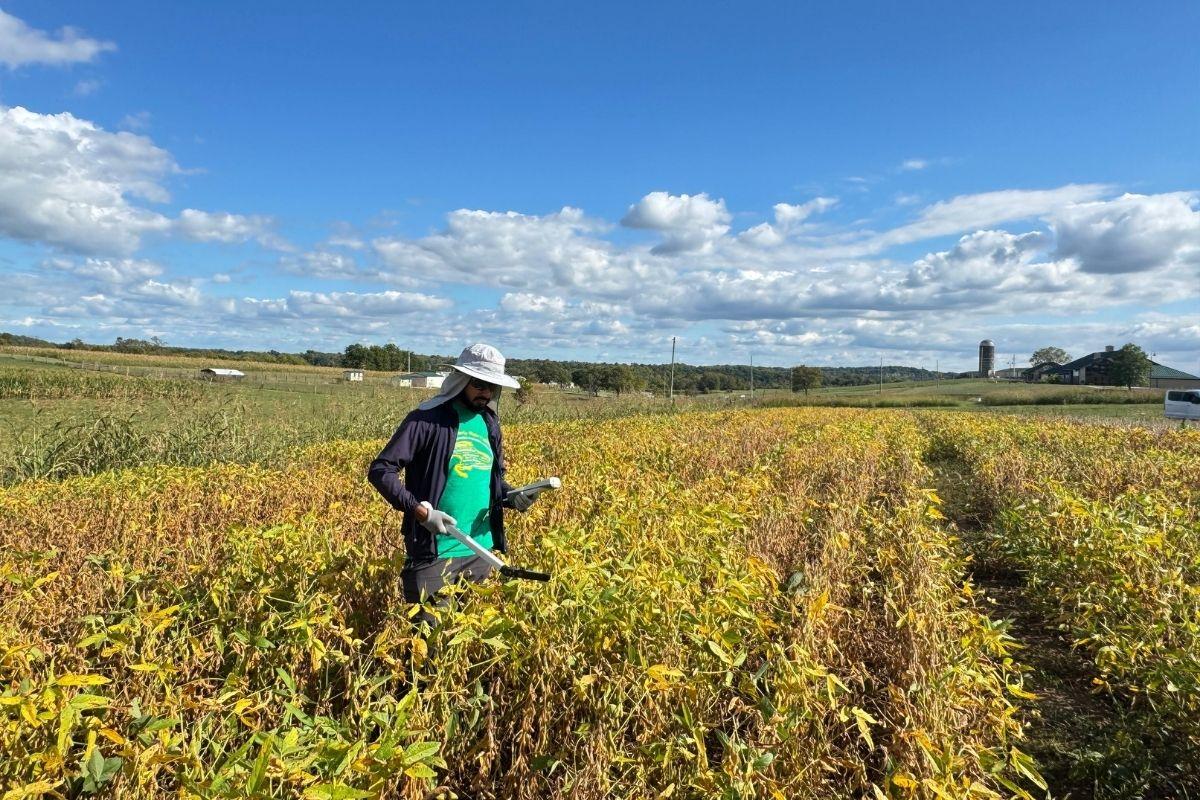
Sudip measuring soybean LAI
(Lead Researcher - Lalit Pun Magar and Susma Adhikari)
The project focuses on integrating manual and high-throughput aerial phenotyping to estimate key morphophysiological traits and yields in soybean, addressing the critical challenges of selecting the most suitable aerial phenotyping sensors, indices, and timing. Traditional phenotyping techniques in soybean are time-consuming, labor-intensive, and unreliable over large areas. Therefore, this study incorporates multiple sensors (RGB, Multispectral, LiDAR, Thermal etc.) to capture soybean growth and physiology at various time points within a single experimental unit. The study aims to identify the most effective sensors, indices, and ideal timing for aerial phenotyping to help overcome the phenotypic bottleneck in soybean.
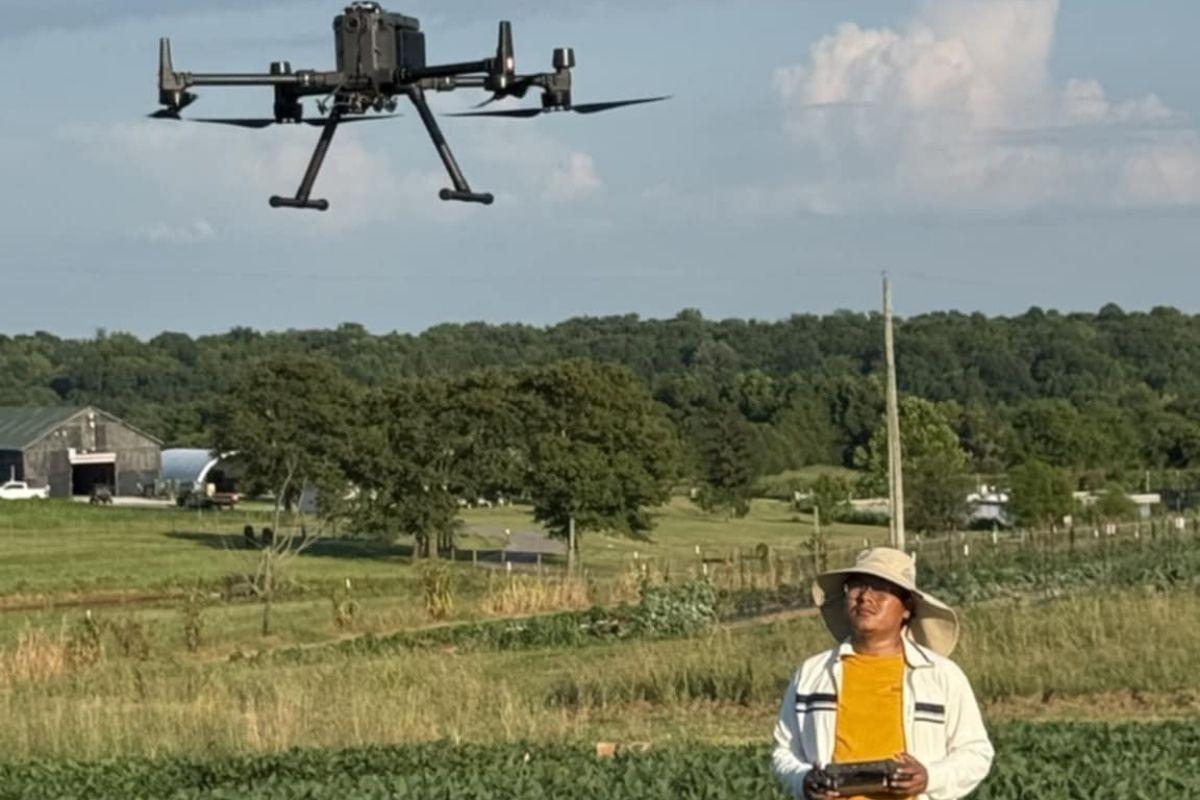
Lalit flying DJI Matrice 300RTK for monitoring soybean growth
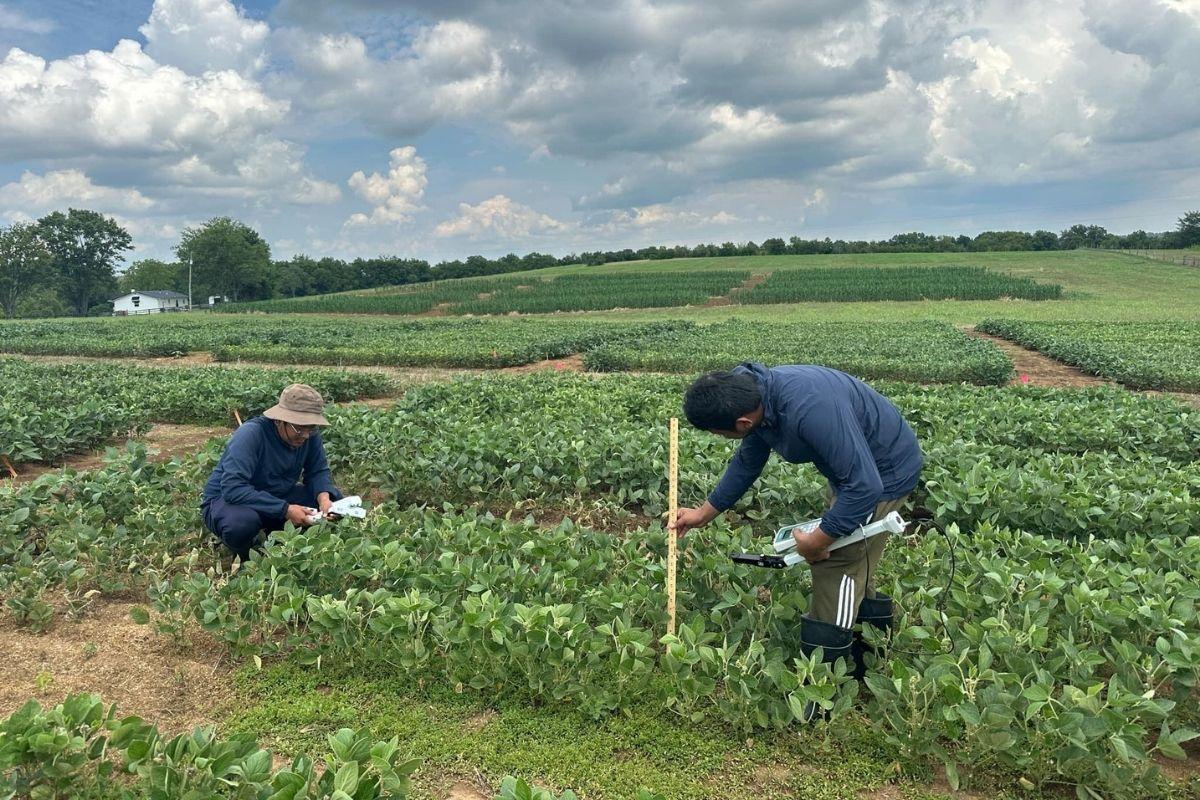
Plant height data recording in the field
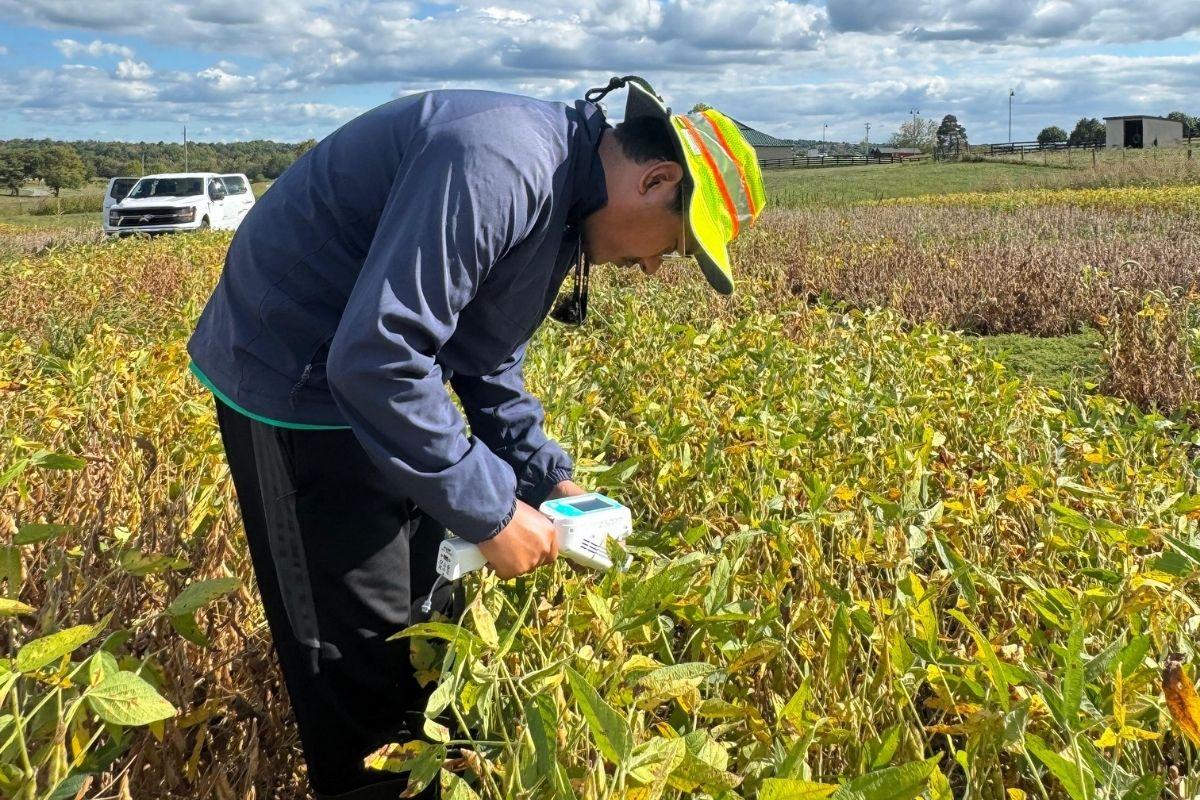
Ground reference measurement for stomatal conductance
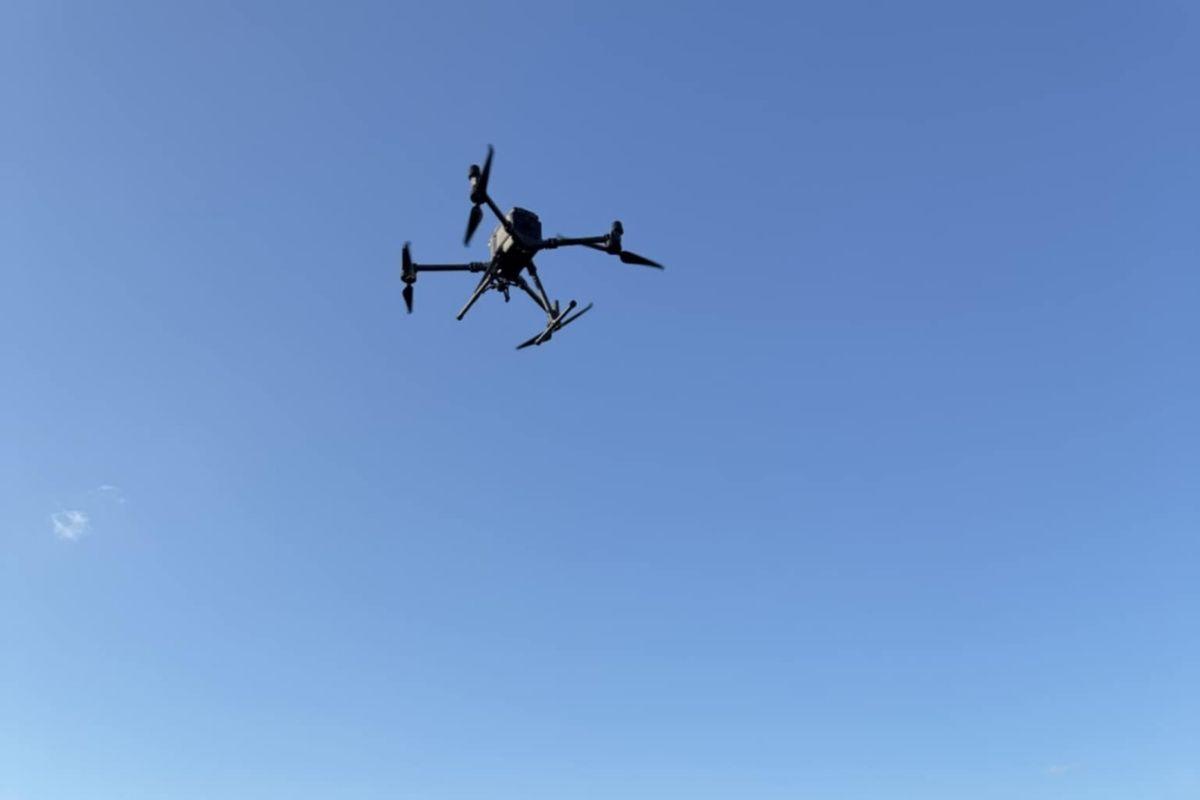
Drone in action
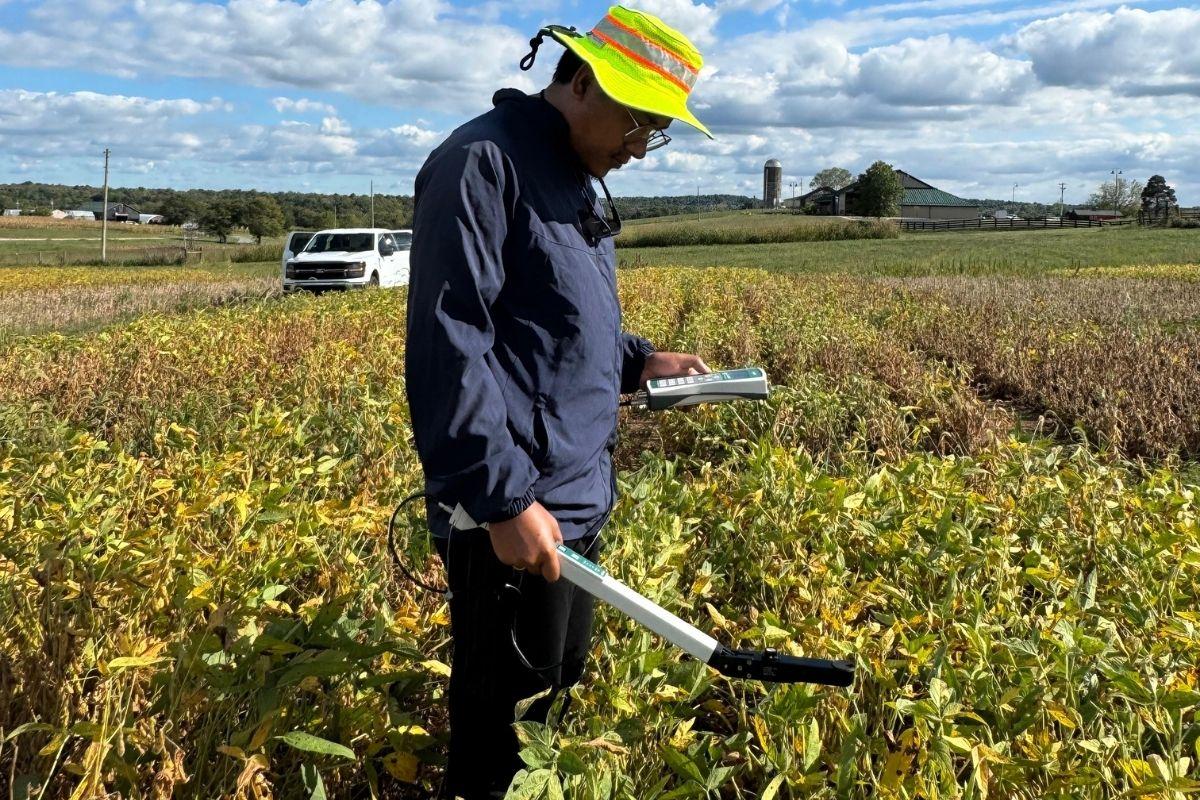
LAI data recording in the field
(Lead Researcher - Anjan Timilsina)
The existing soybean planting date recommendation in Kentucky is based on decades old studies and may no longer reflect current agricultural conditions. With increasing climate variability and evolving agricultural practices, identifying the right planting time for soybeans has become more critical than ever. Hence this project focuses on identifying the optimal planting dates for soybean cultivars from different maturity groups. By studying how planting date affects crop growth, yield and seed composition (protein and oil content), this research aims to support Kentucky farmers in making more informed and efficient planting decisions and maturity group cultivars selection based on their specific cropping system and crop management practices.
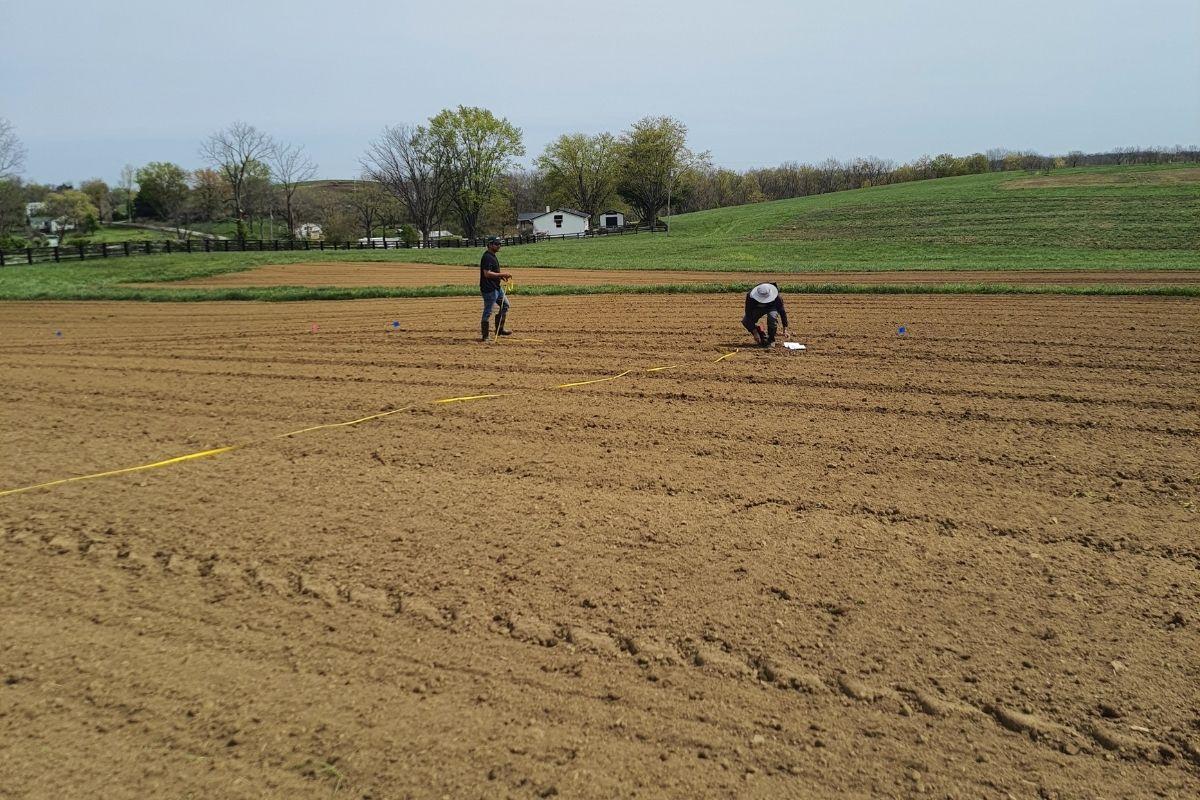
Field demarcation for separating plots
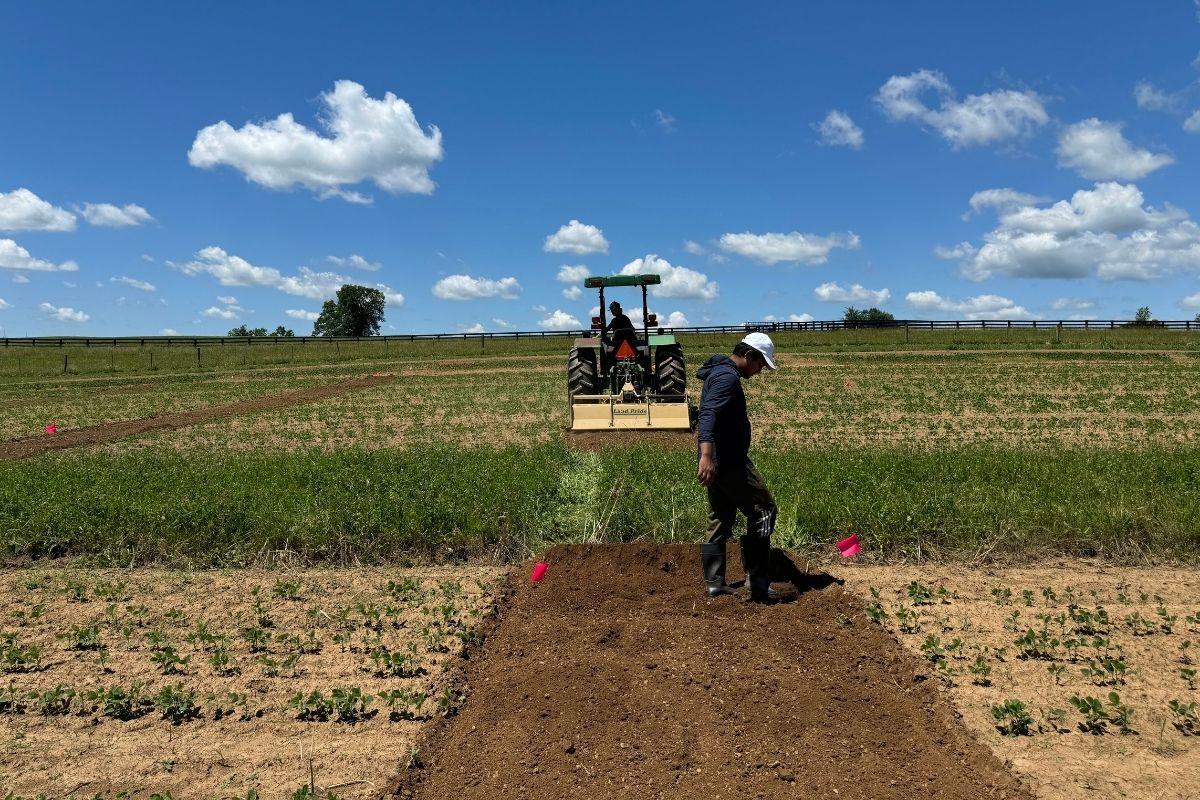
Plots separation using cultivators
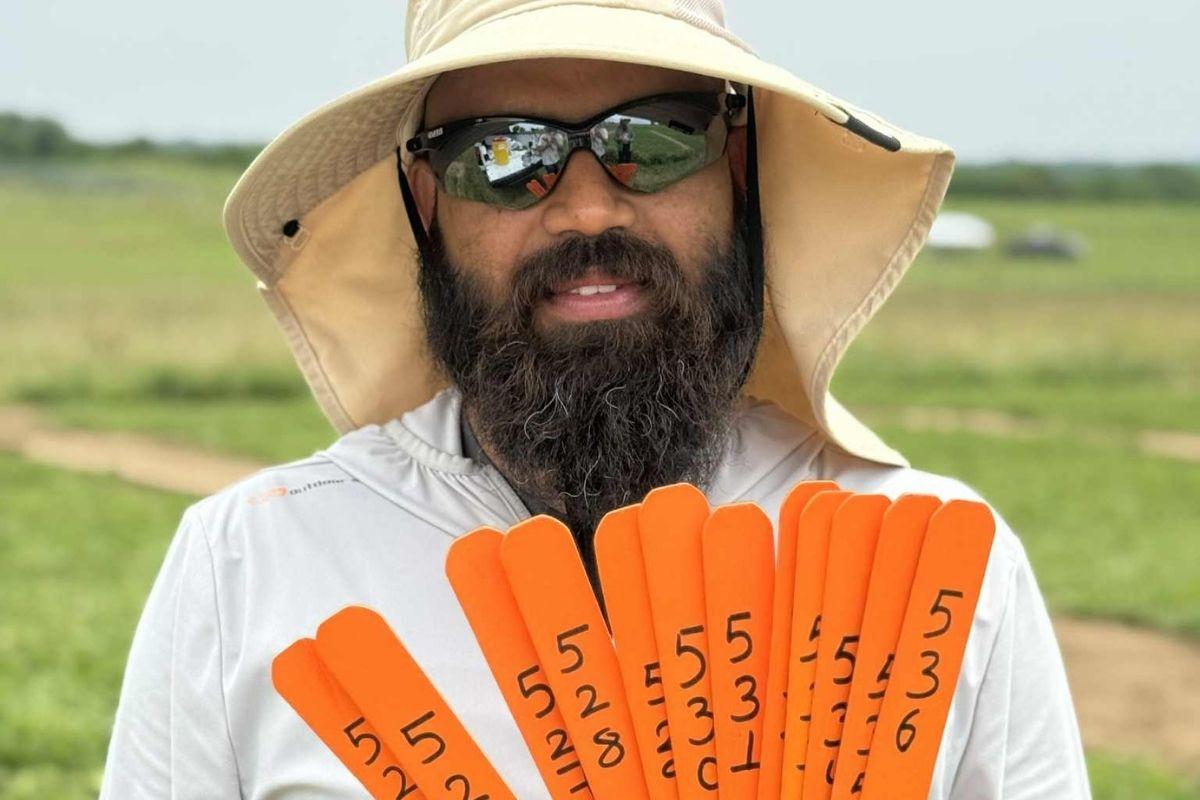
Anjan with tag and their plot number
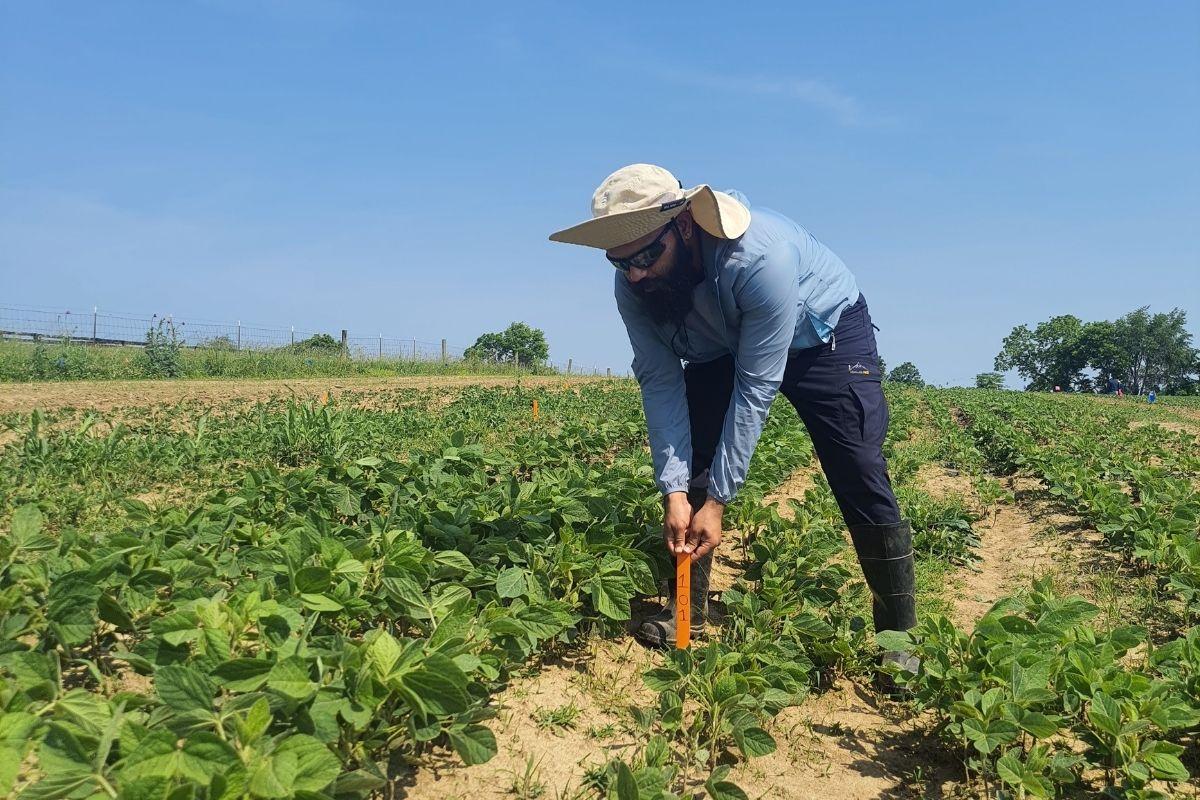
Wooden tag installation in the field
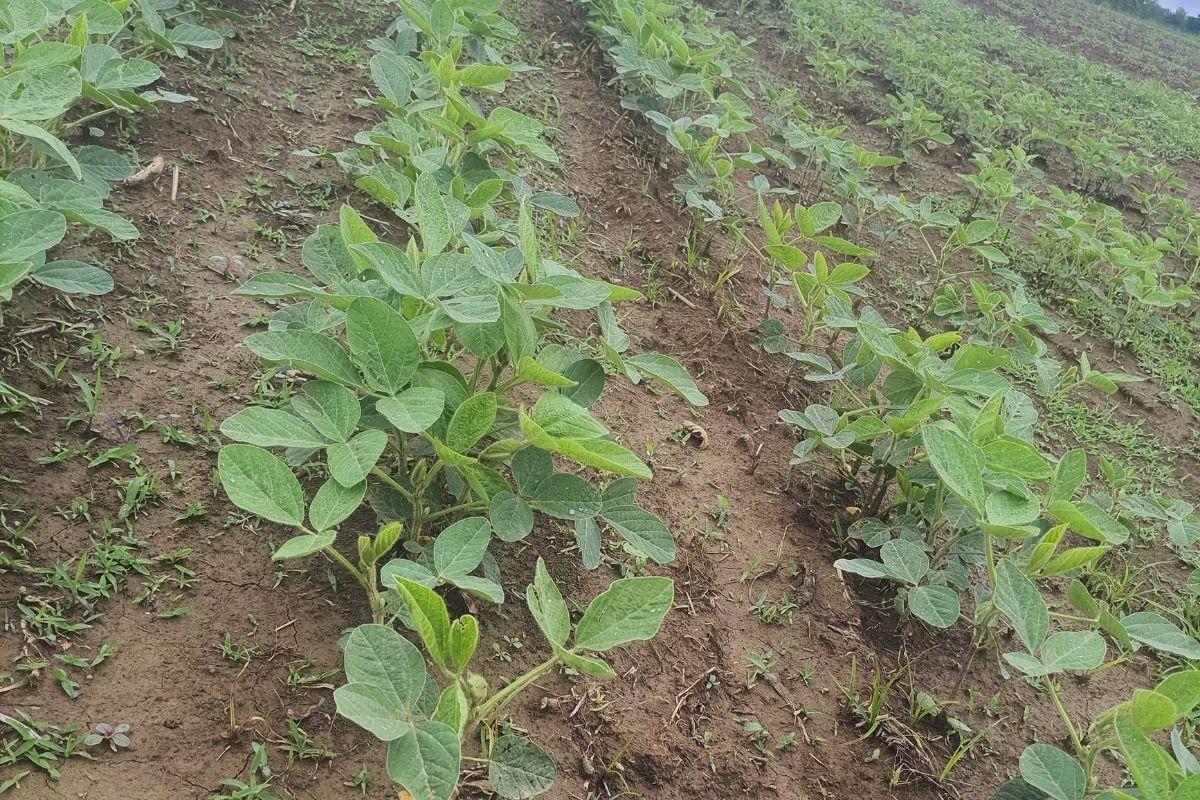
Soybean in advanced vegetative stage
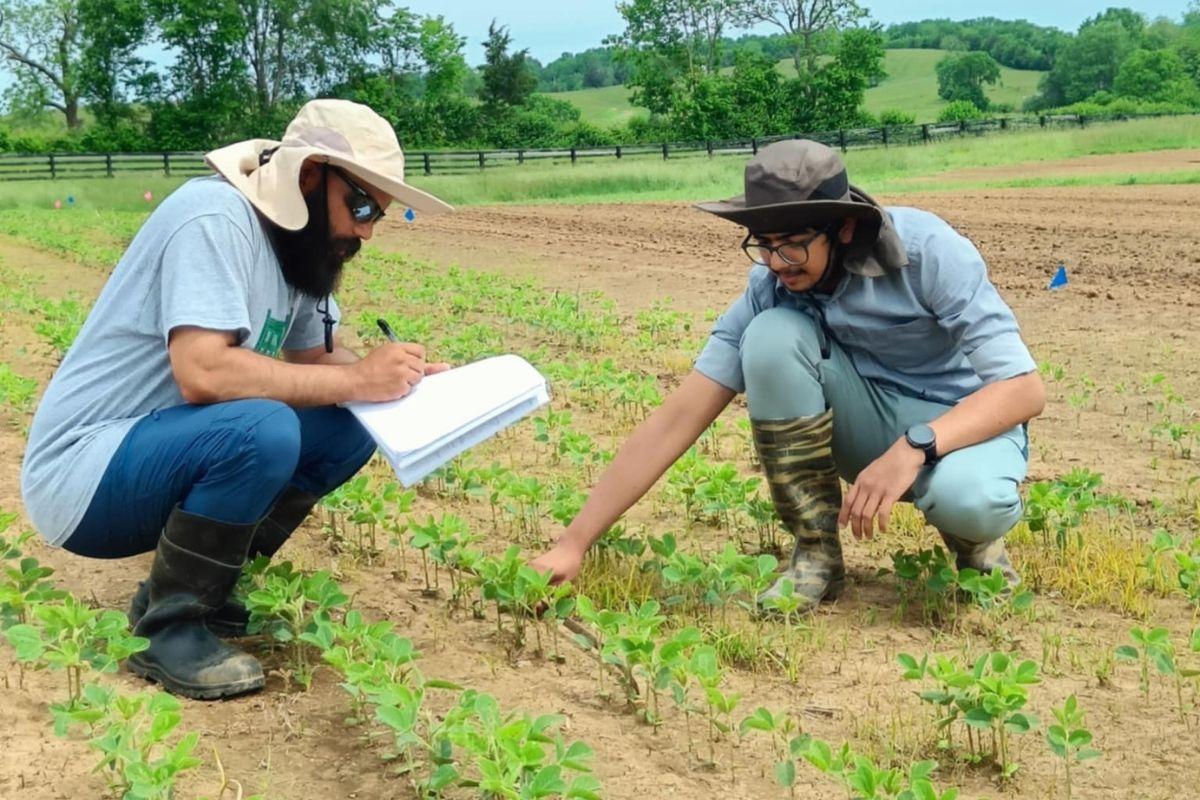
Soybean phenology tracking
(Lead Researchers - Anjan Timilsina and Deepak Khatri)
This project investigates how biochar application affects key physical, chemical, and biological properties of soil in a conventional continuous soybean cropping system. We are analyzing soil samples before soybean planting and after harvest each year from 2023 to assess changes in several soil health parameters. The rationale for this study is based on biochar’s potential to improve soil structure, increase nutrient and moisture retention, and stimulate microbial activity-factors that are critical for building resilient soils in conventional farming. The findings will help determine how biochar can be used as a soil amendment to enhance soil health, improve crop productivity, and support long-term carbon storage.
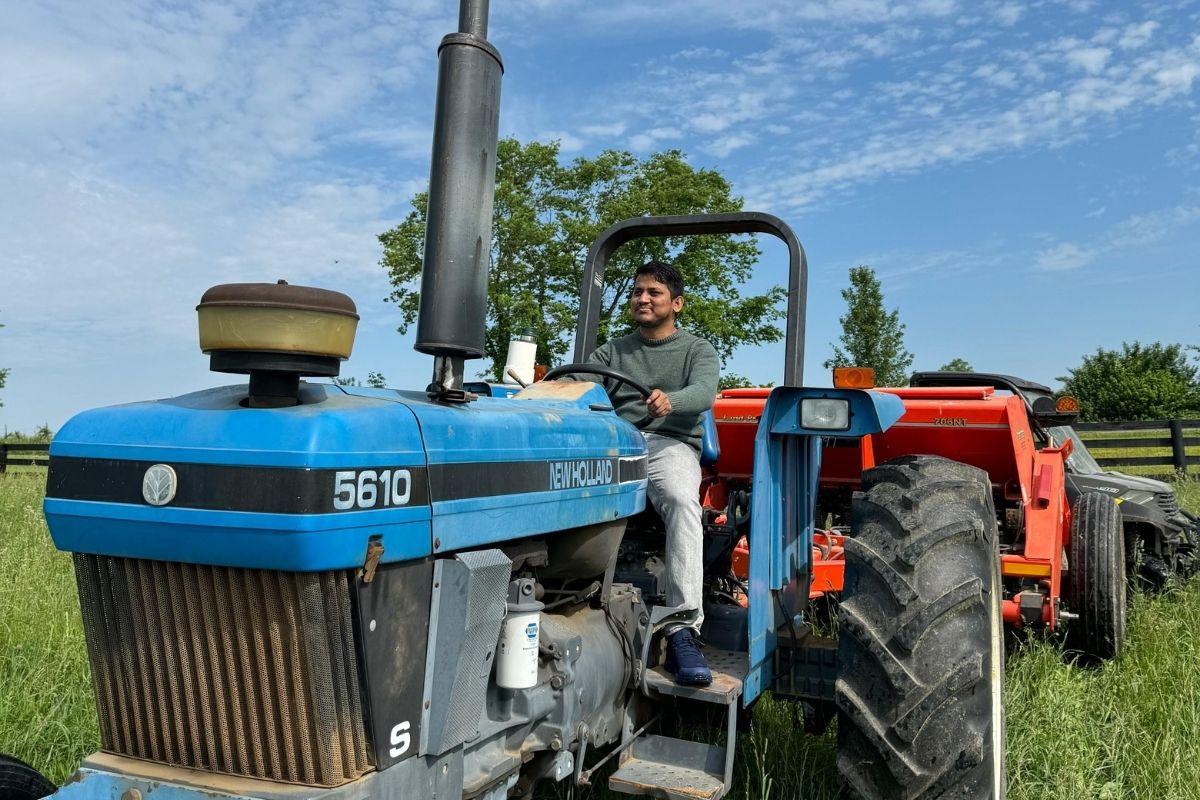
Deepak giving some rest to the farm crew
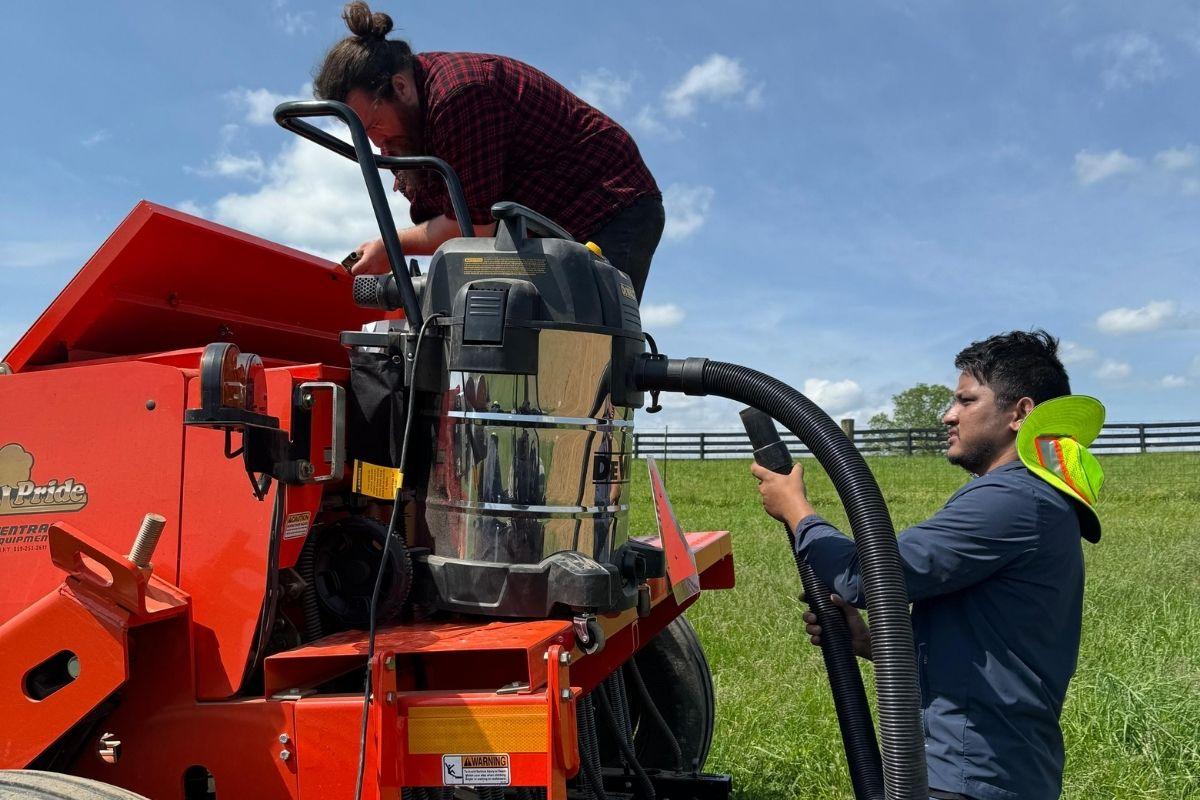
Seed collection using vacuum pump
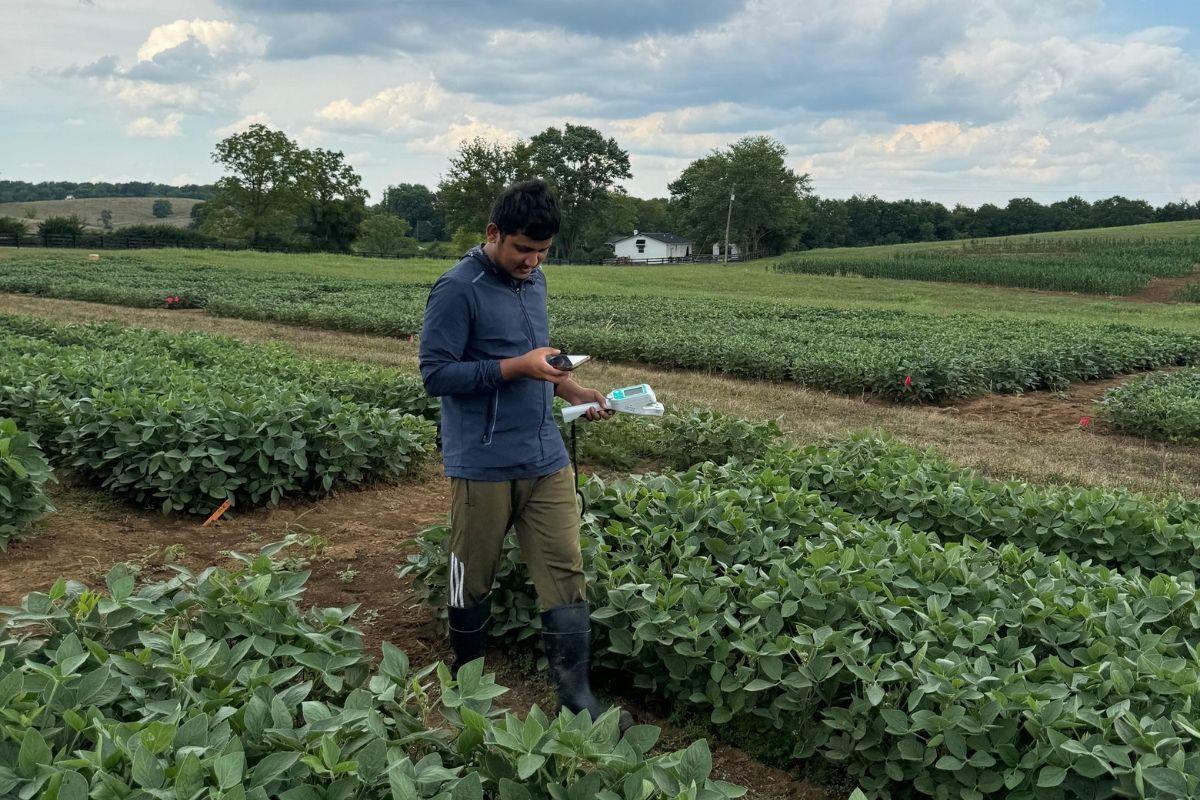
Deepak ready for field data collection
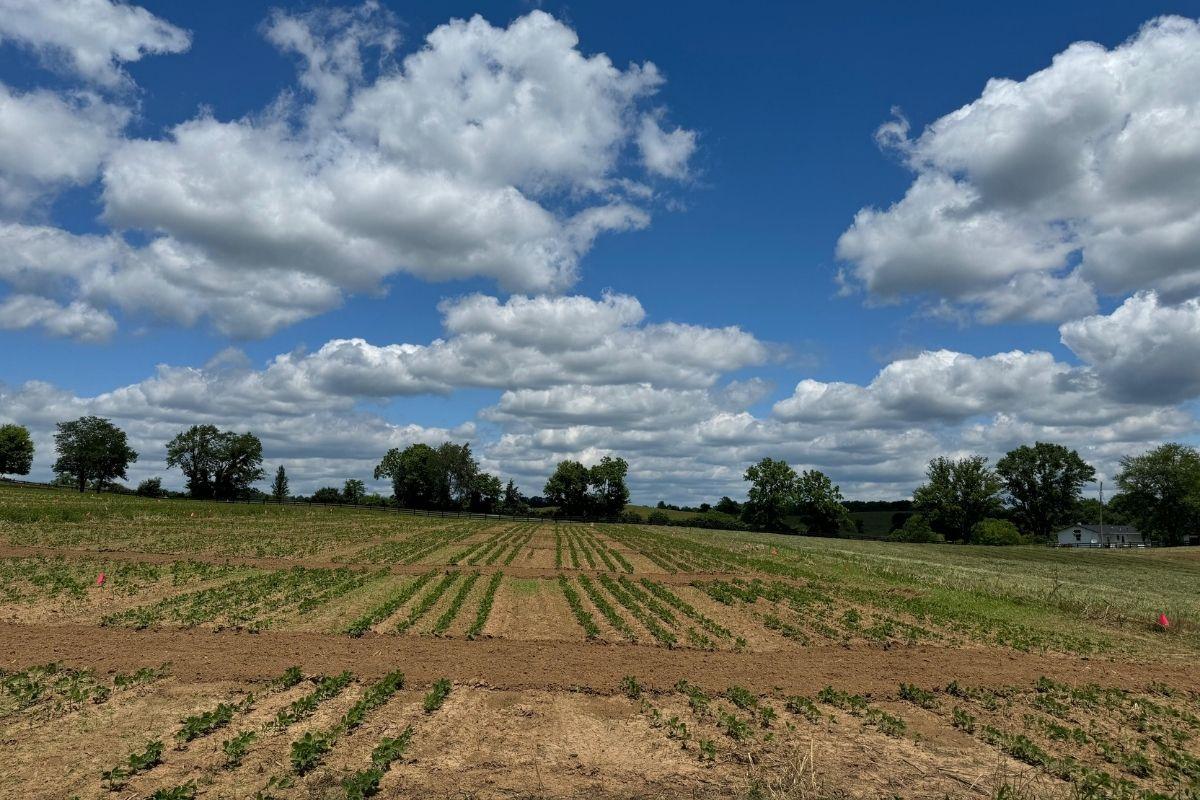
Soybean at early vegetative stage
(Lead Researchers - Srijana Kandel and Binaya Baral)
This project investigates how biochar application affects key physical, chemical, and biological properties of soil in a conventional continuous soybean cropping system. We are analyzing soil samples before soybean planting and after harvest each year from 2023 to assess changes in several soil health parameters. The rationale for this study is based on biochar’s potential to improve soil structure, increase nutrient and moisture retention, and stimulate microbial activity-factors that are critical for building resilient soils in conventional farming. The findings will help determine how biochar can be used as a soil amendment to enhance soil health, improve crop productivity, and support long-term carbon storage.
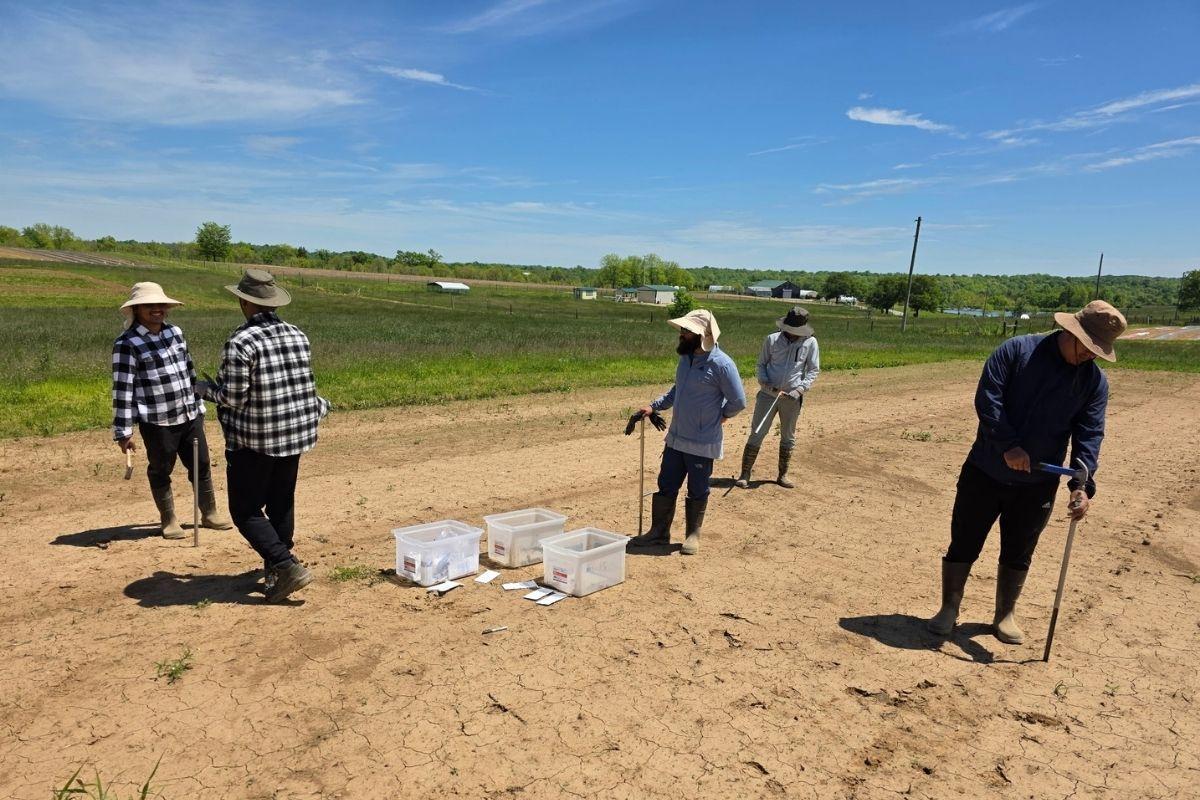
Soil sample collection before plantation
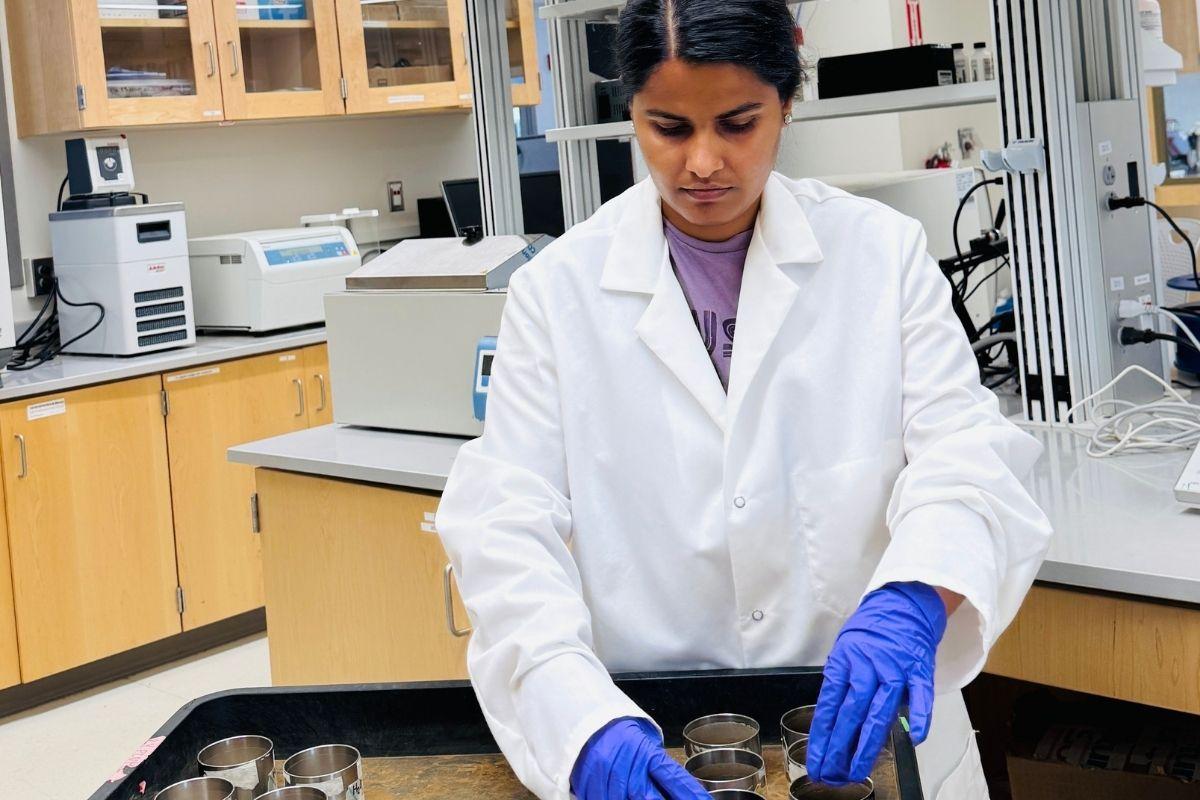
Srijana busy with her lab work
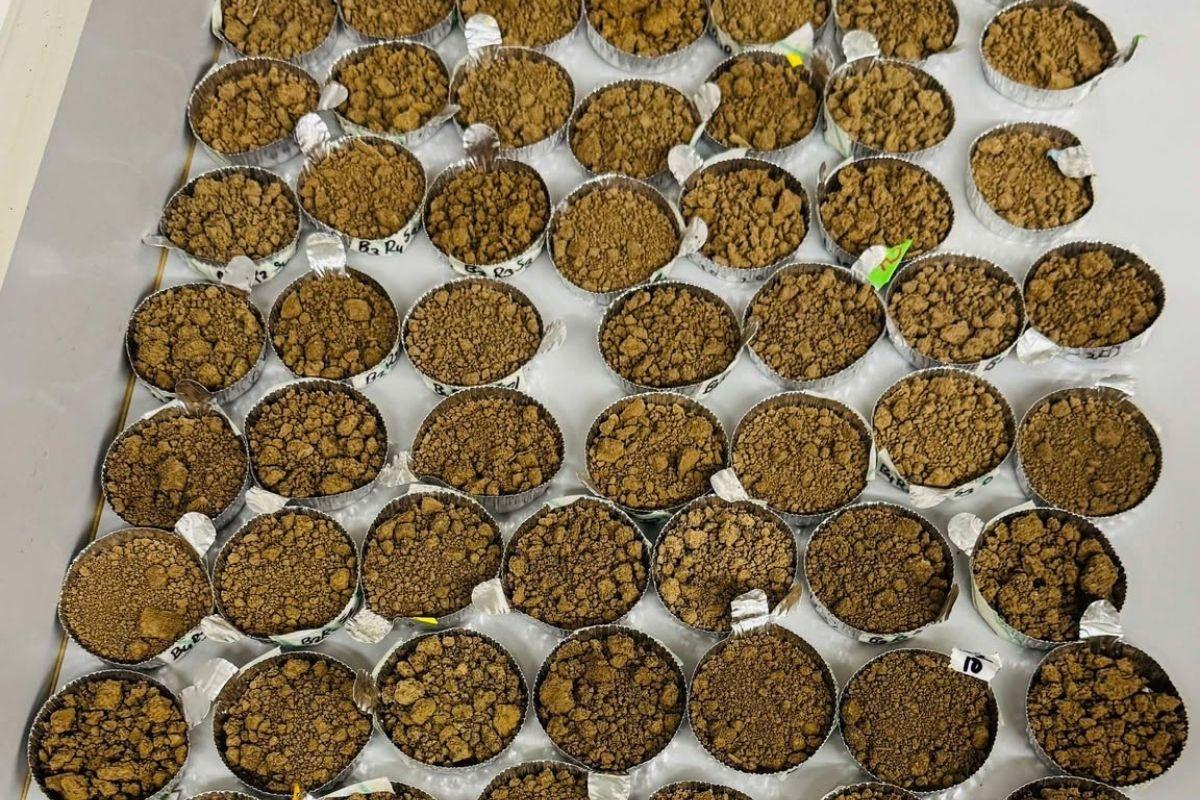
Soil sample separated for further analysis
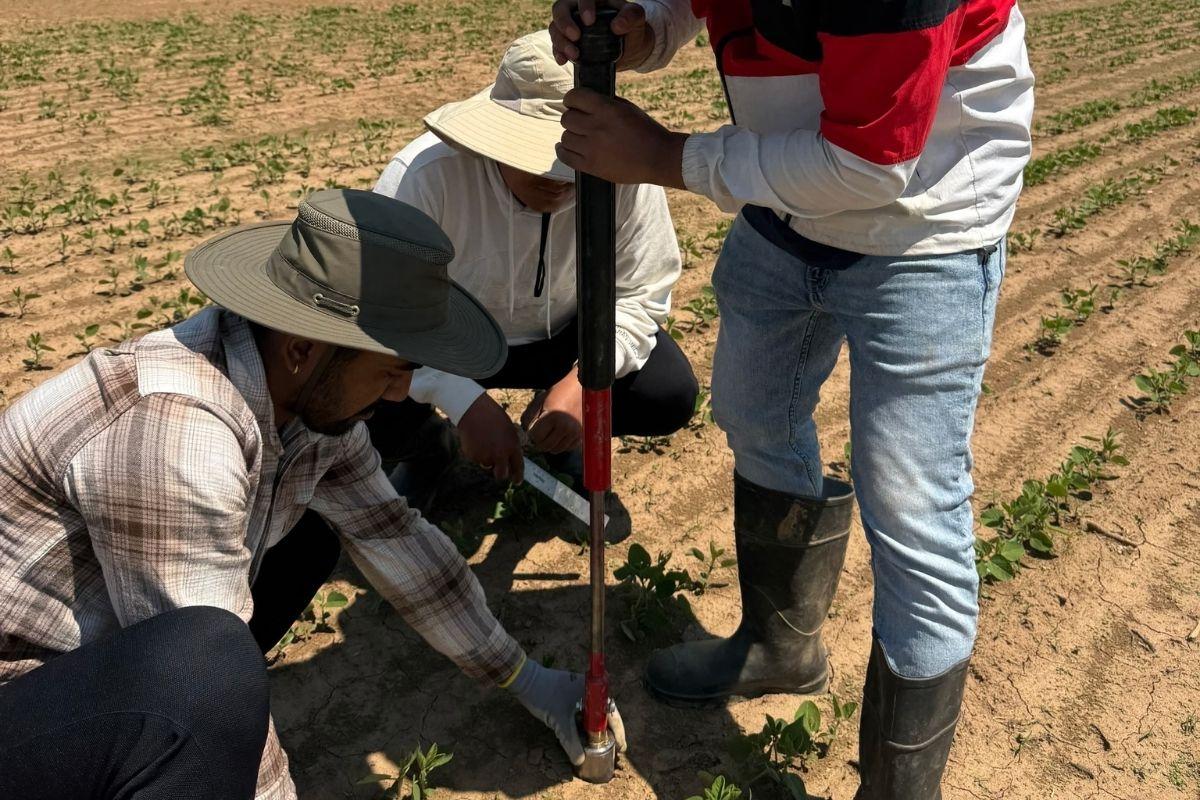
Soil sample collection using core sampler
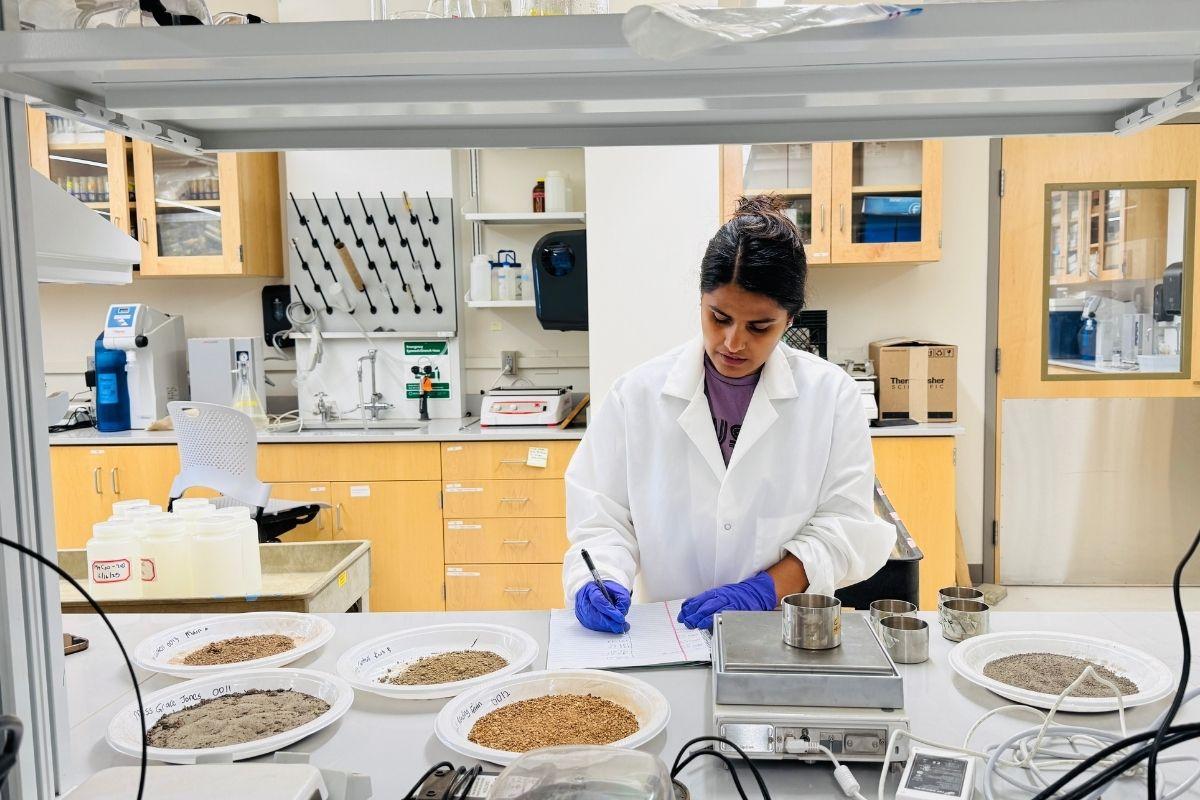
Srijana recording soil data for her research
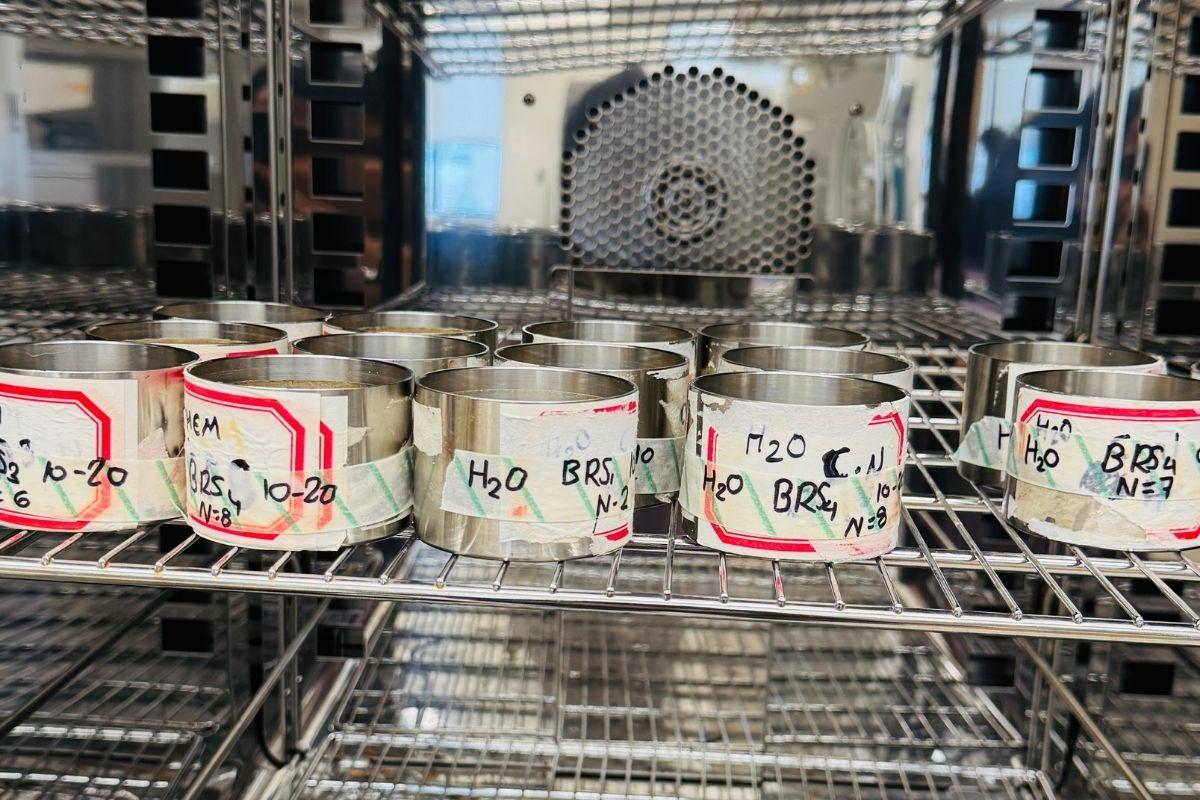
Sample stored in oven for further lab work
(Lead Researcher - Deepak Khatri)
Biochar has been extensively used as a soil amendment in several crops including soybean. Biochar effects on increasing root growth, root nodulation, and microbial biomass have already been documented, which are the major contributors for biological N fixation in soybean. Biological nitrogen fixation accounts for majority of the nitrogen requirement in soybean under favorable conditions. However, the effect of biochar on soybean seed composition, such as protein and oil concentrations, amino acids and fatty acids profile is still unknown. Hence, this study investigates the effect of biochar on soybean yield and seed composition, with the goal of assessing its impact on enhancing biological N fixation in soybean.
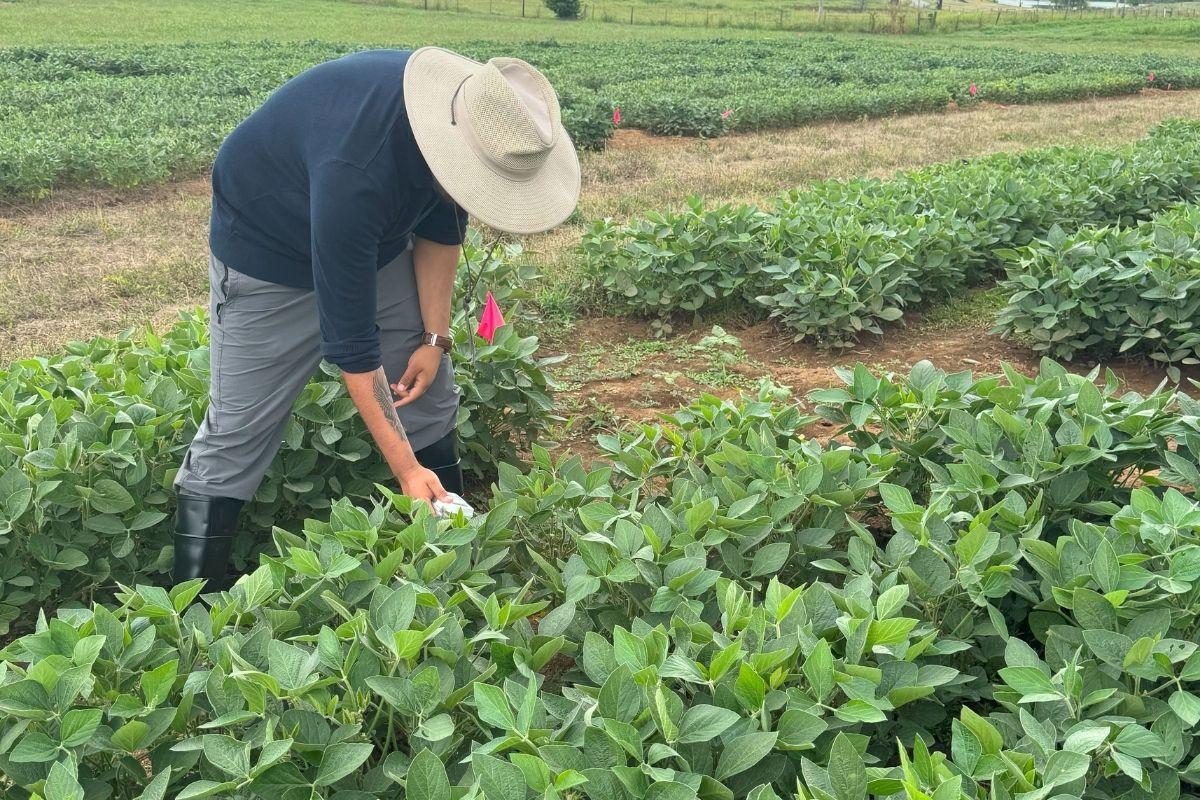
Suraj capturing field data
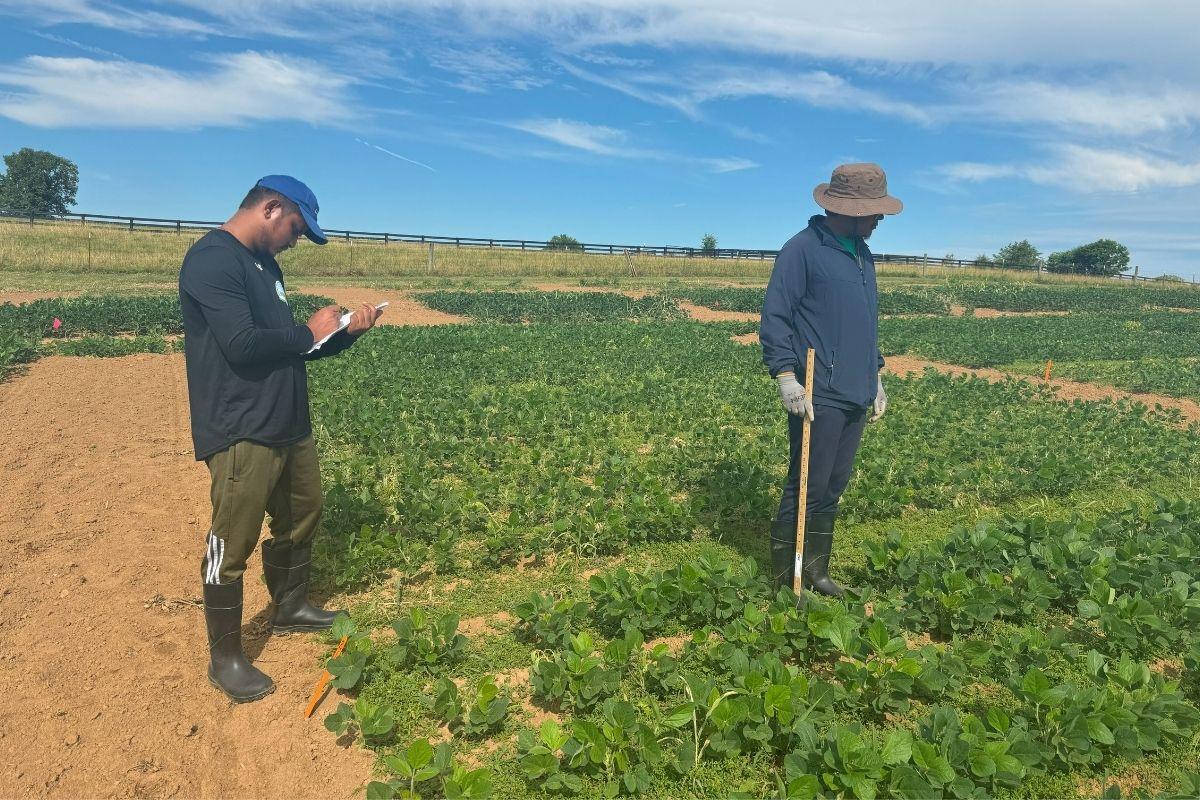
Deepak recording field measurement
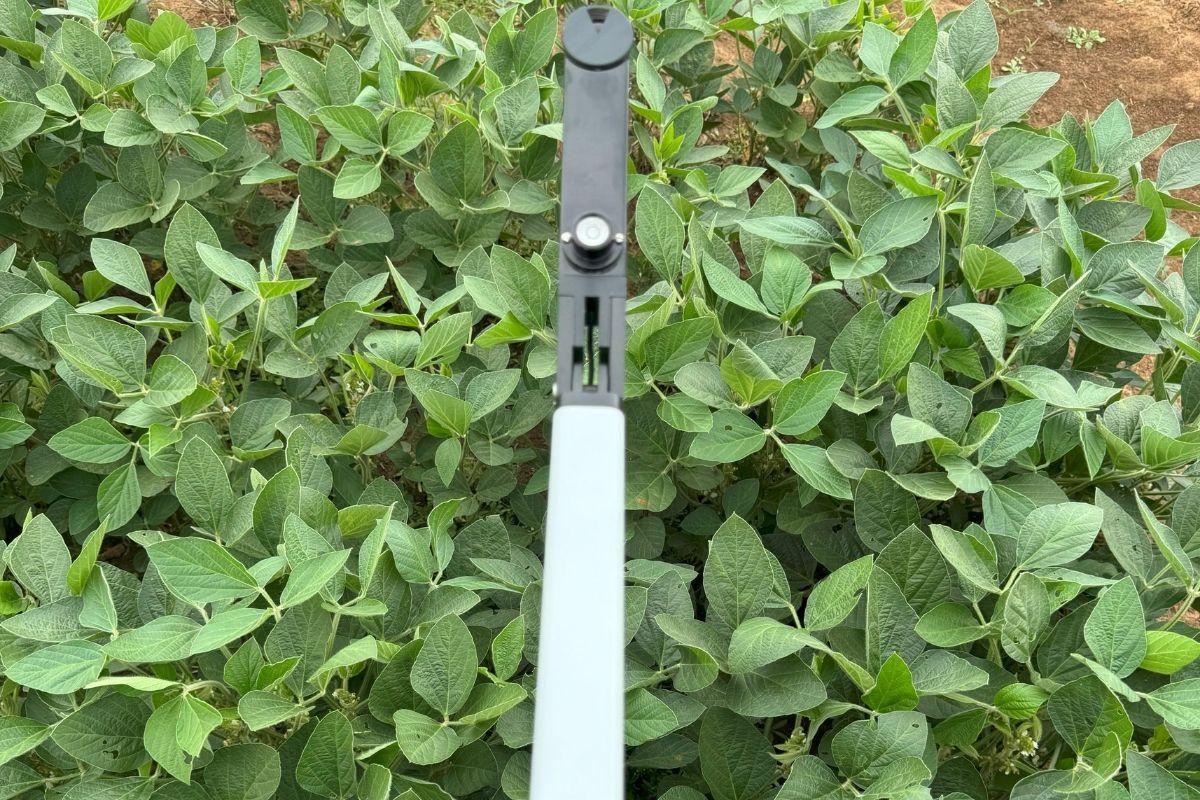
LAI 2200C PCA taking above canopy measurement
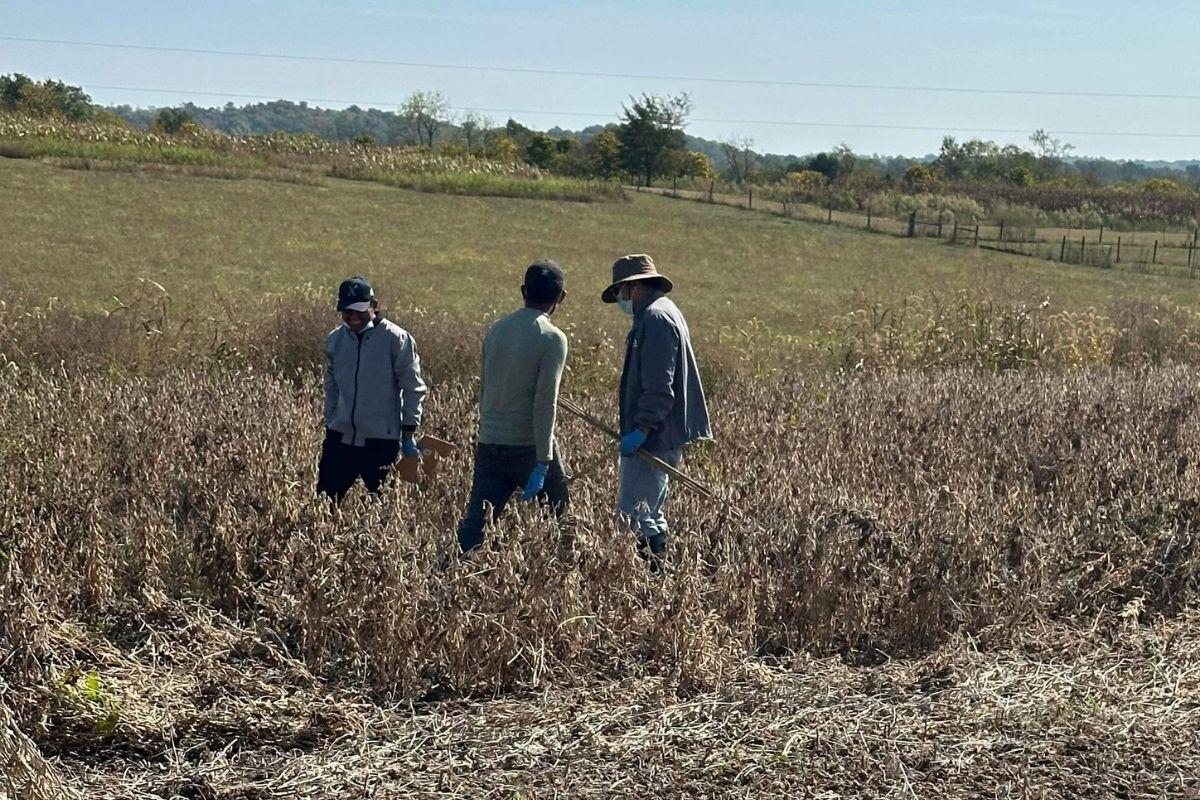
Crew preparing field for final harvest
(Lead Researchers - Prakriti Paudel and Deepak Khatri)
The critical N dilution curve provides information about minimum shoot N concentration requirement at a given crop growth stage to support maximum plant growth. Developing this curve requires experiments that establish both N-limiting and non-limiting conditions across various growth stages. However, for nitrogen-fixing crops like soybean, creating distinct N-limiting environments is particularly challenging due to the plant’s ability to fix atmospheric N through biological N fixation. As a result, critical N dilution curve—and thus the minimum shoot N concentration needed for optimal growth—remains unavailable for soybean. Hence, we are conducting experiments using non-nodulating soybean cultivars under a wide range of N fertilization levels to develop a critical N dilution curve for soybean.
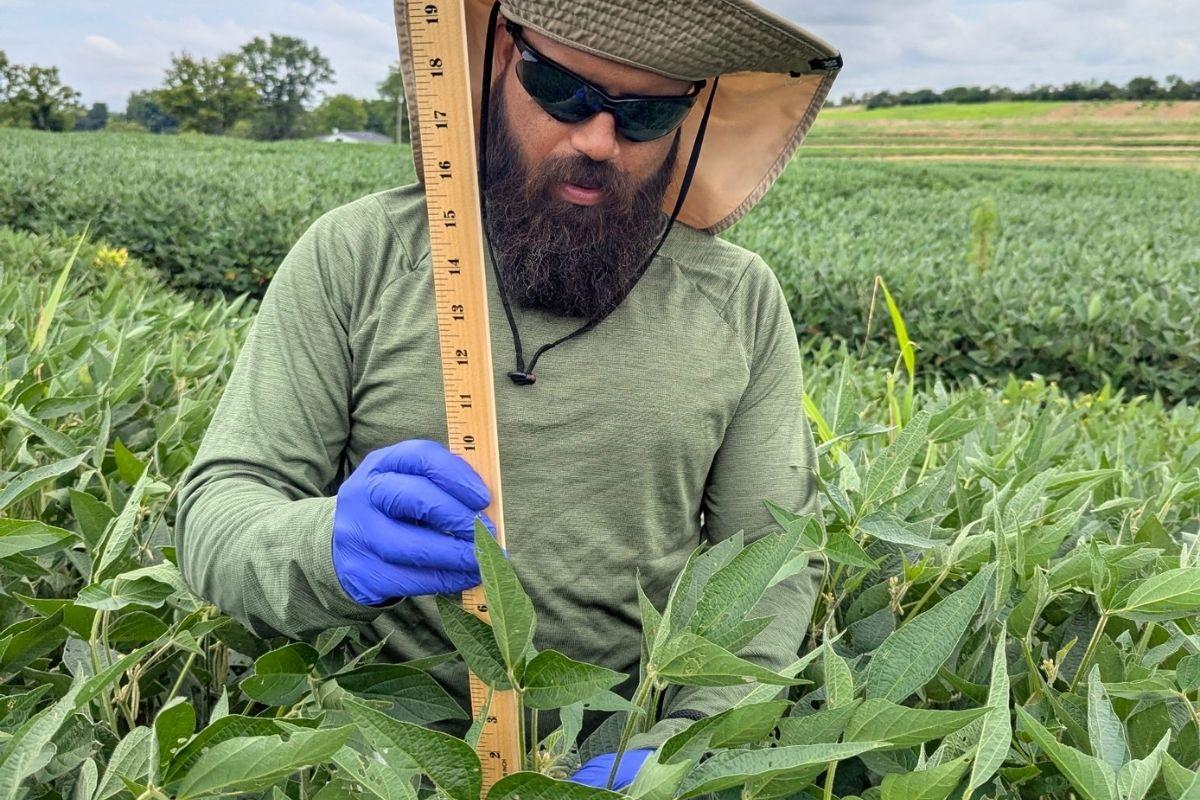
Plant height measurement in the field
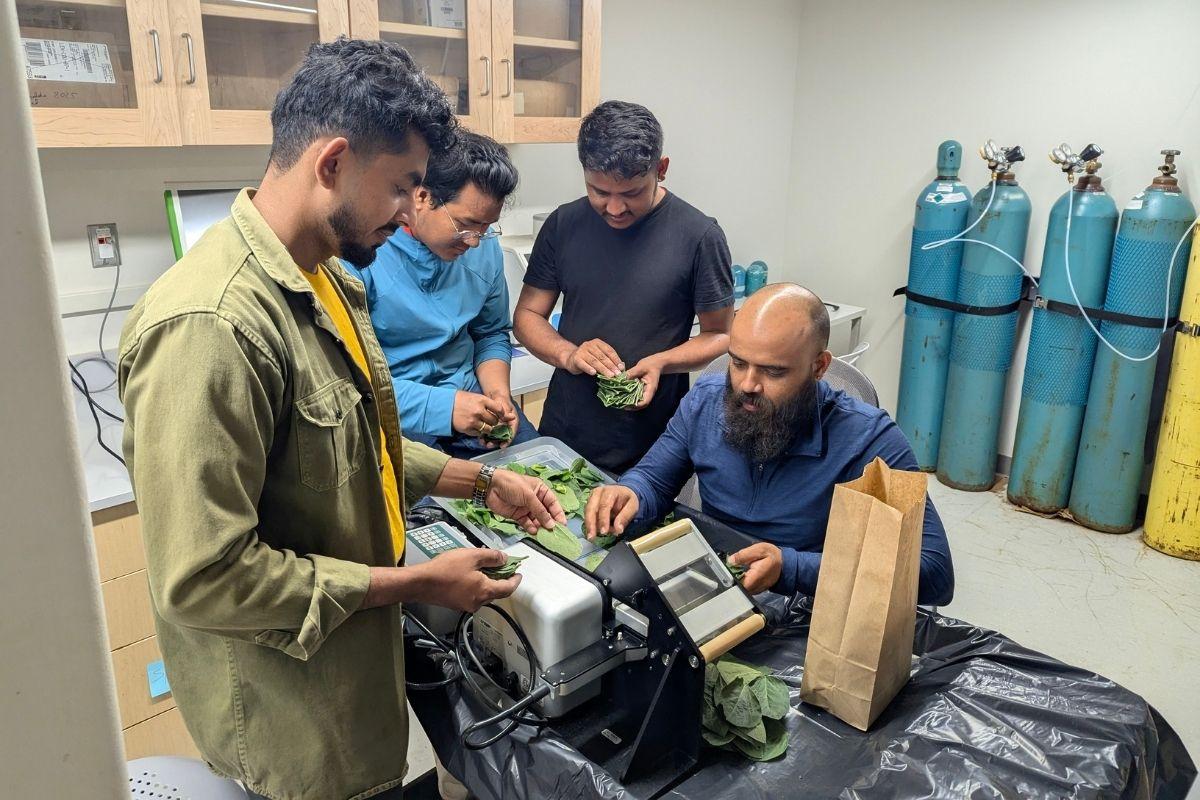
Leaf area measurement in the lab using LI-3050C
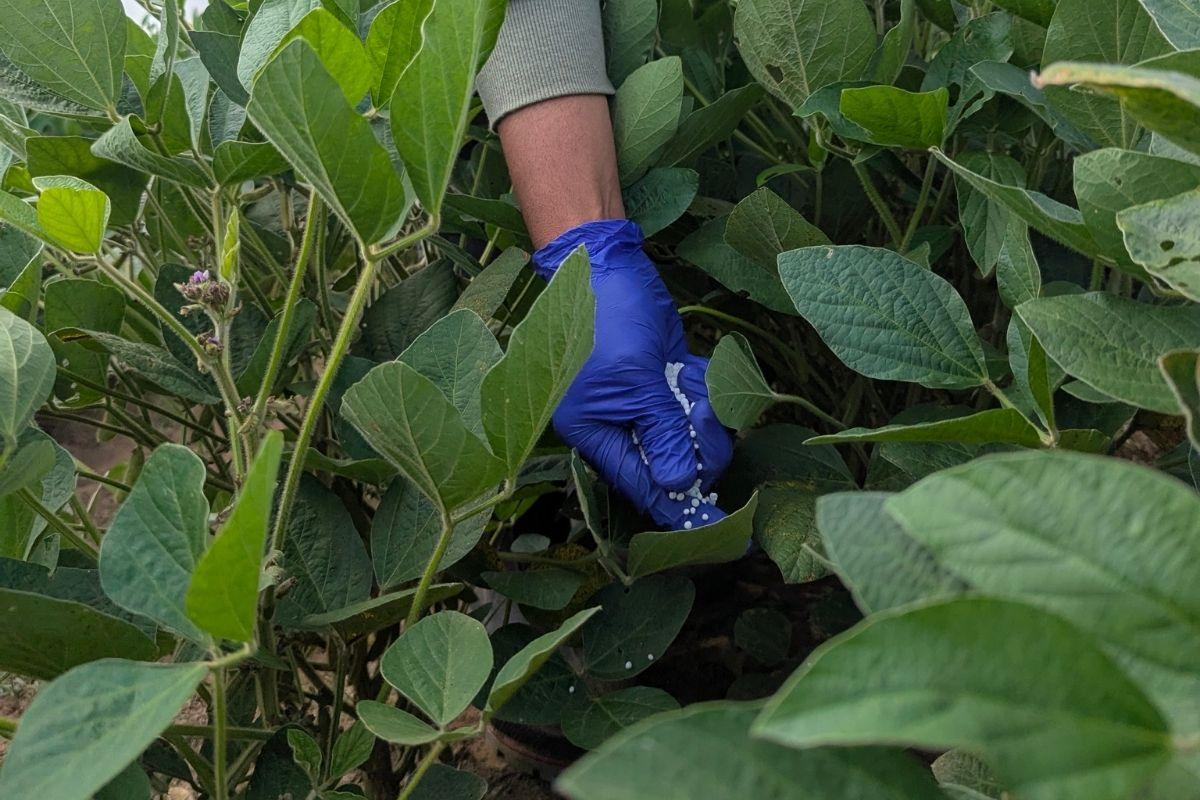
Nitrogen application in the field
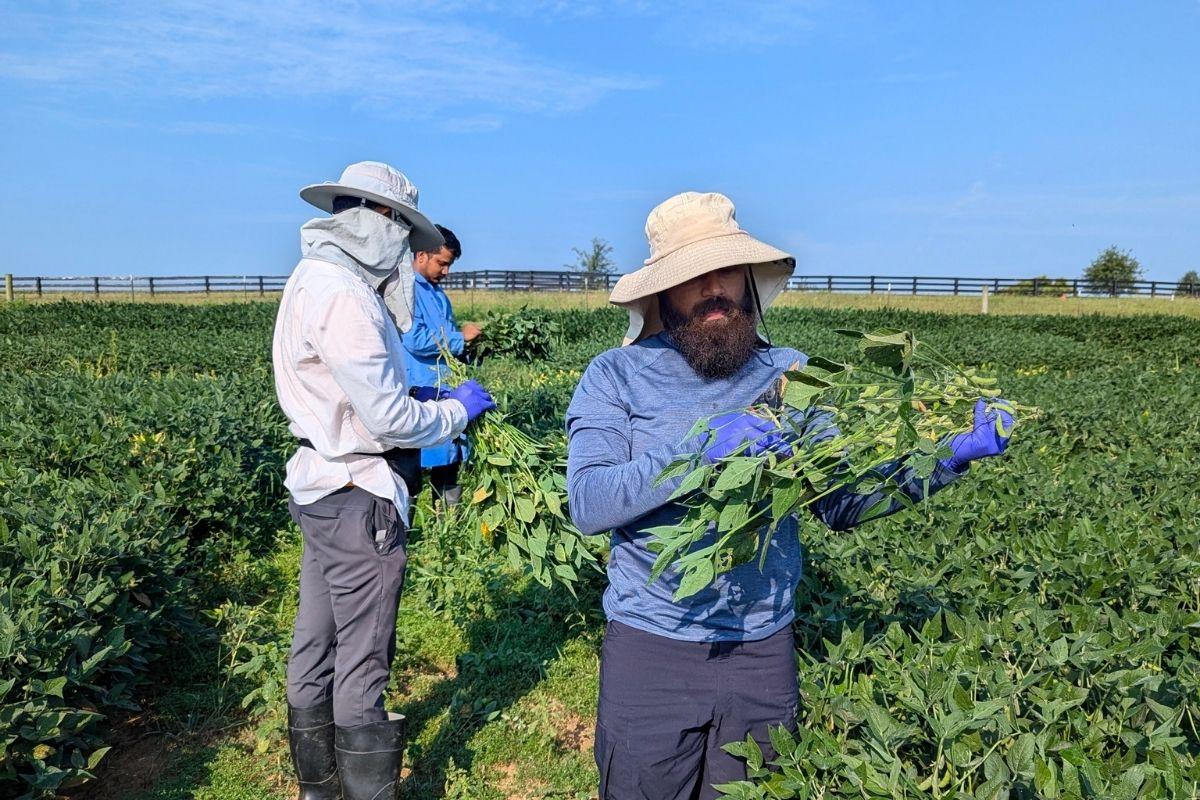
Plant sample collection for developing pod study
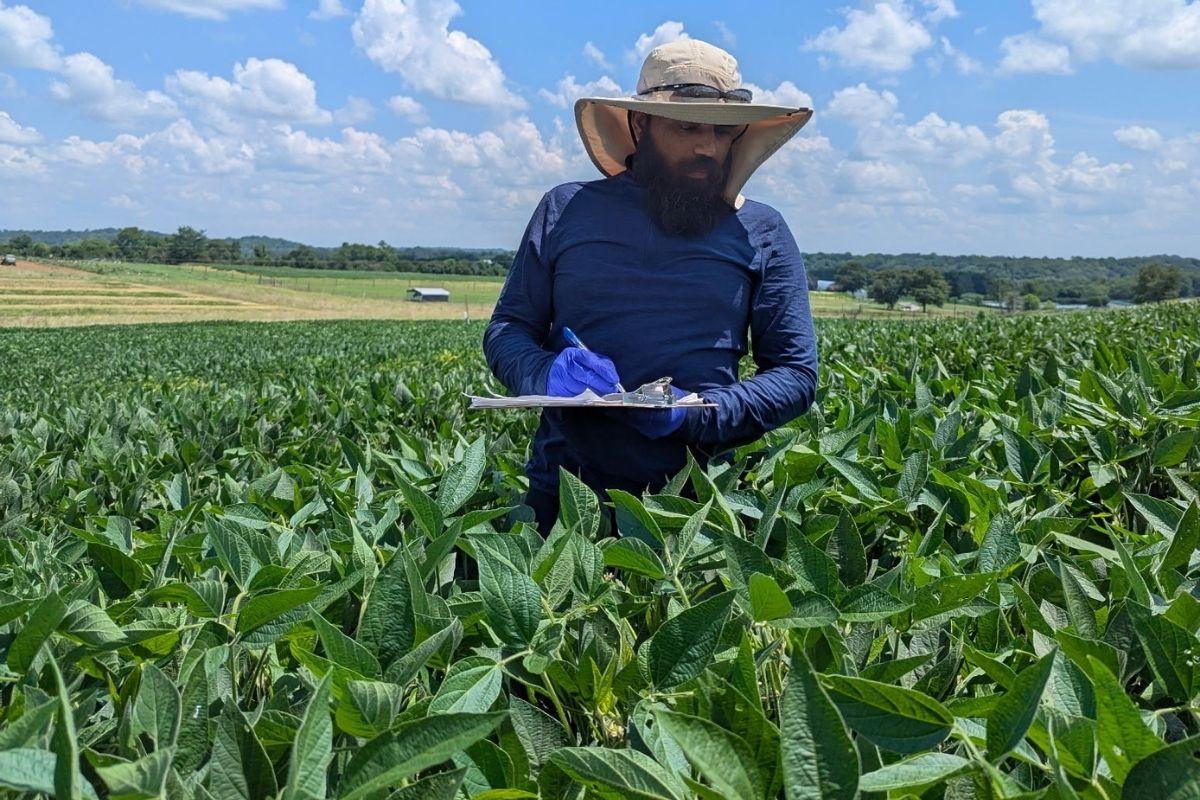
Plant phenology tracking
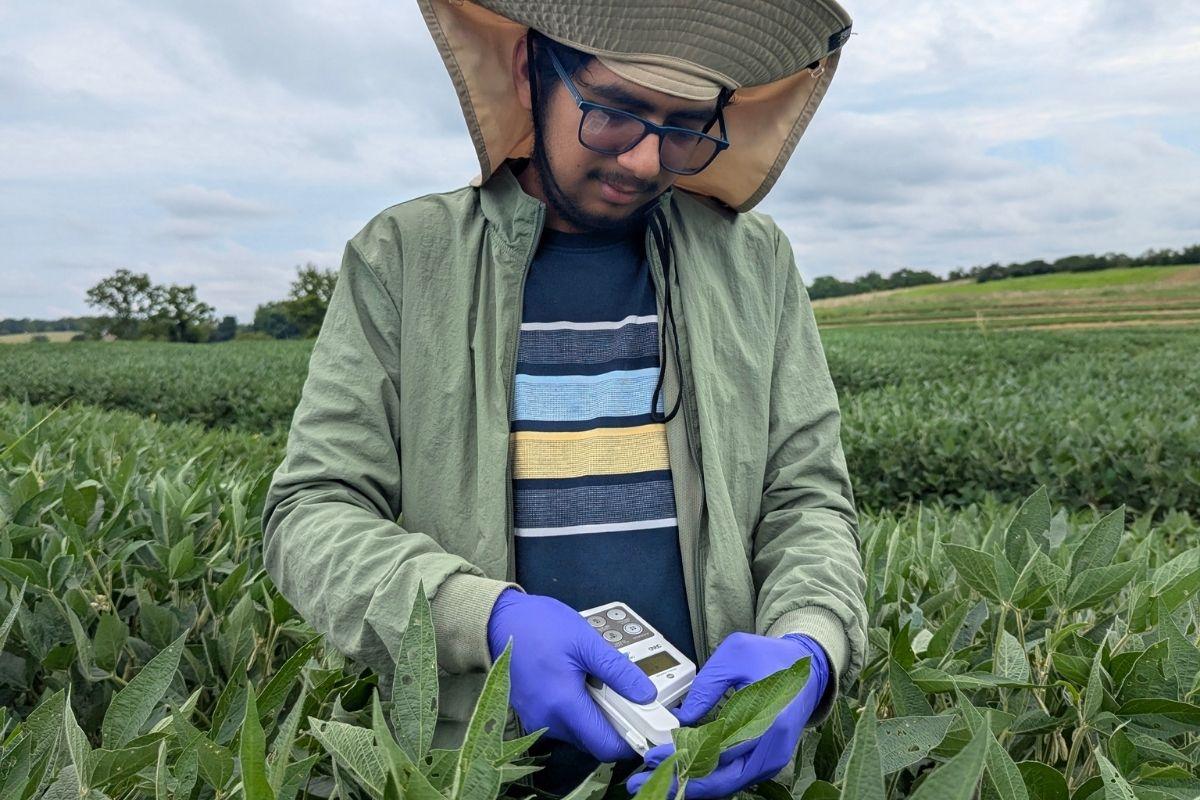
Leaf Nitrogent measurement using SPAD
(Lead Researcher - Binaya Baral: collaborative project with Organic Agriculture Lab, KSU, PI – Dr. Shawn Lucas)
Currently Binaya is working on this project as part of his master’s thesis. This research examines nitrate, dissolved phosphorus, and dissolved organic carbon (DOC) leaching from groundwater, after the first five-year rotation involving organic corn-soybean cropping followed by three years of pastured goat grazing between 2018 to 2022. Ongoing sampling from 2023 to 2025 assesses long-term impacts on water quality. Two controls—perennial pasture and continuous cropping—are included for comparison. Water samples are collected seasonally using pressure-vacuum pump from lysimeters installed at 1-meter depth. The goal is to evaluate how well-managed organic systems protect groundwater resources as well as soil health and minimize nutrient leaching. This work will help identify conservation practices that reduce nutrient losses and enhance water quality in organic systems.
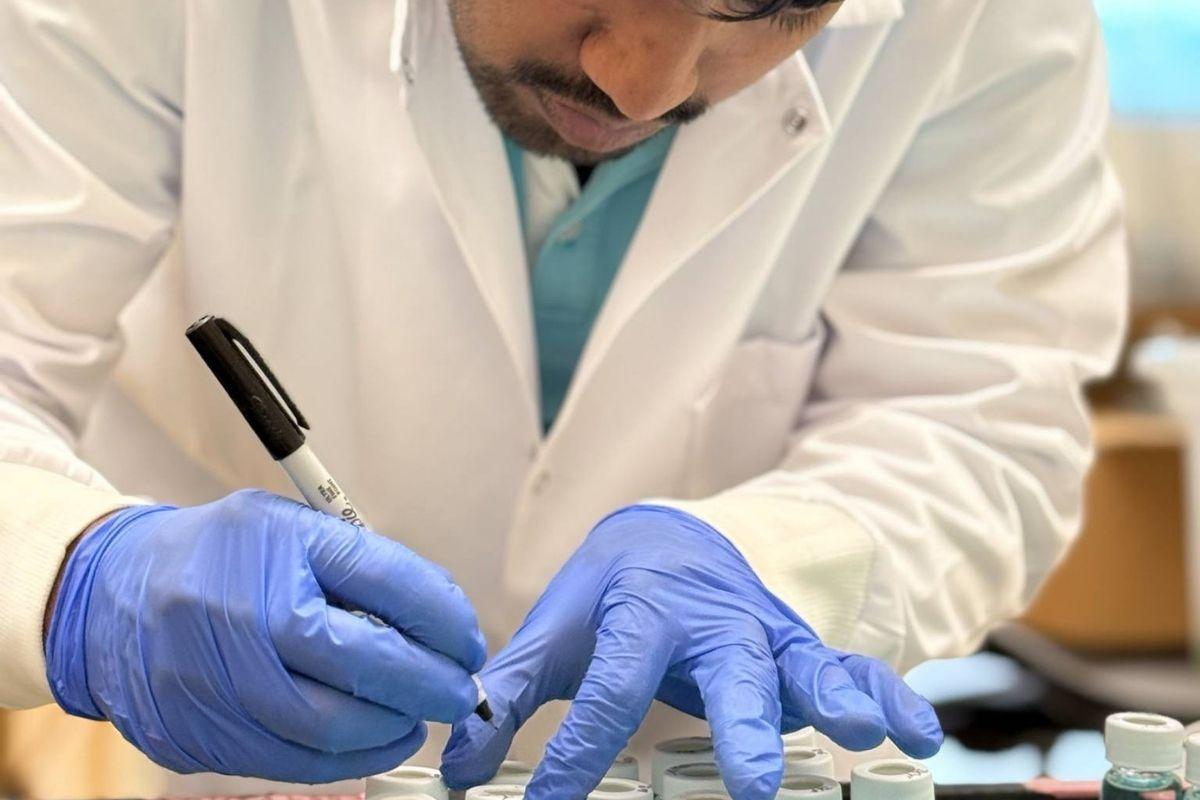
Binaya with his lab work
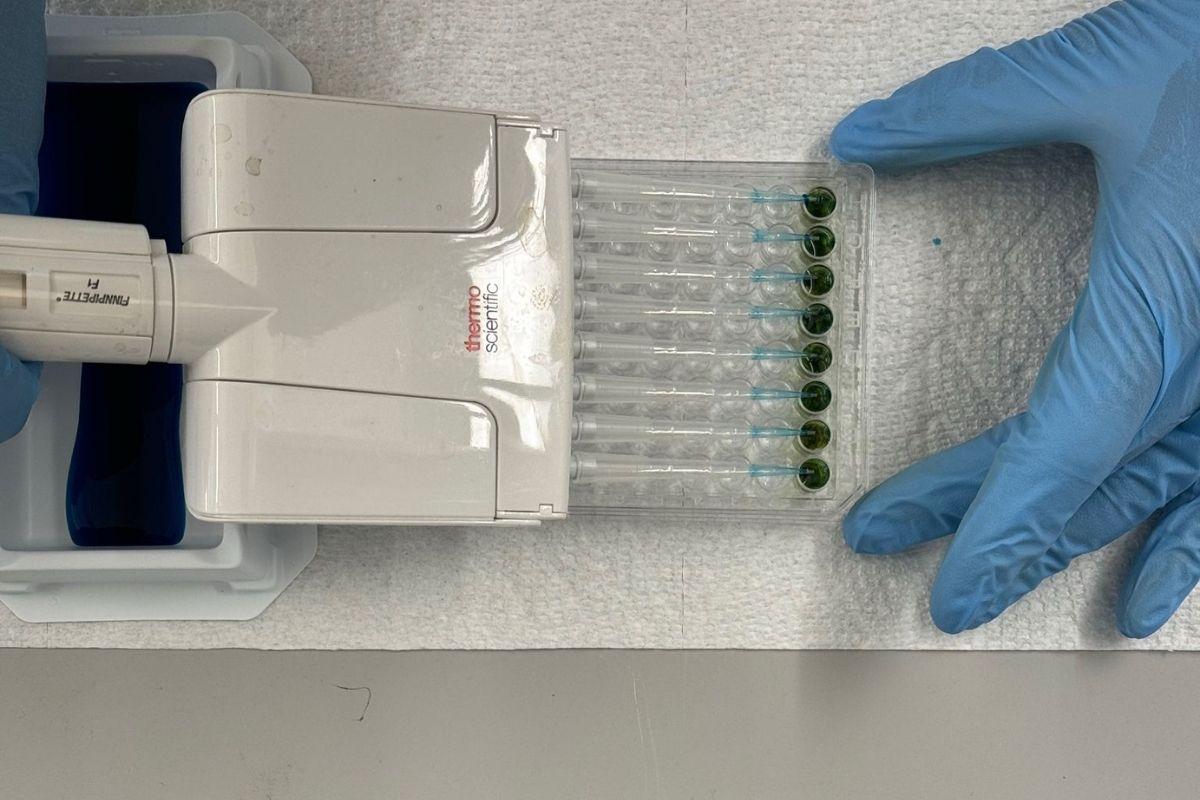
Sample preparation for analysis
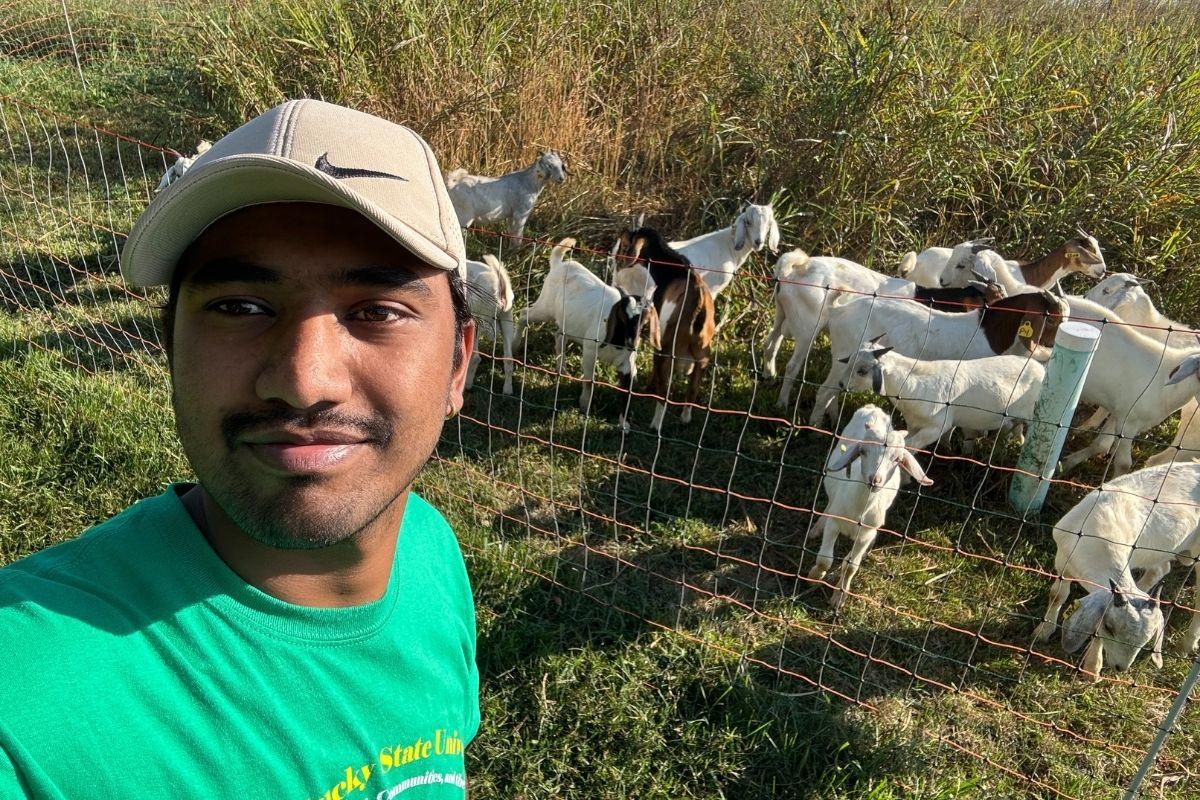
Binaya in the field with goats
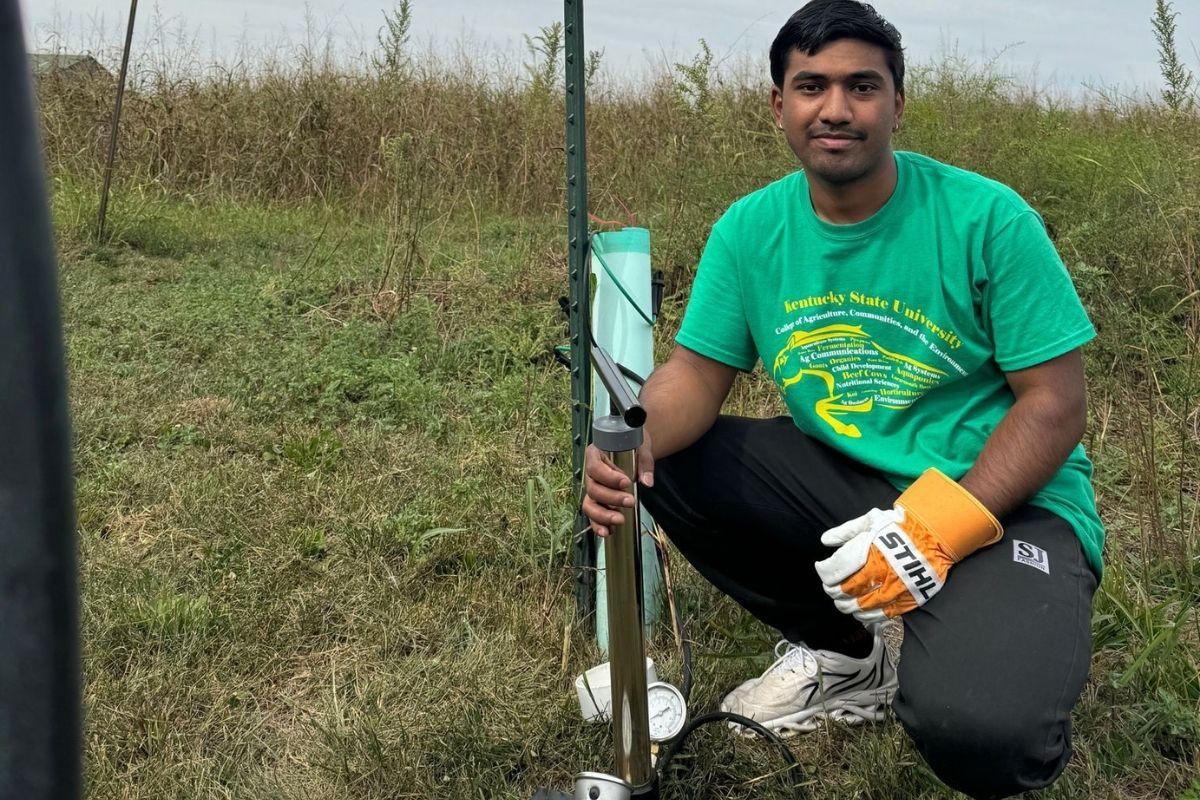
Binaya in the field with field instrument
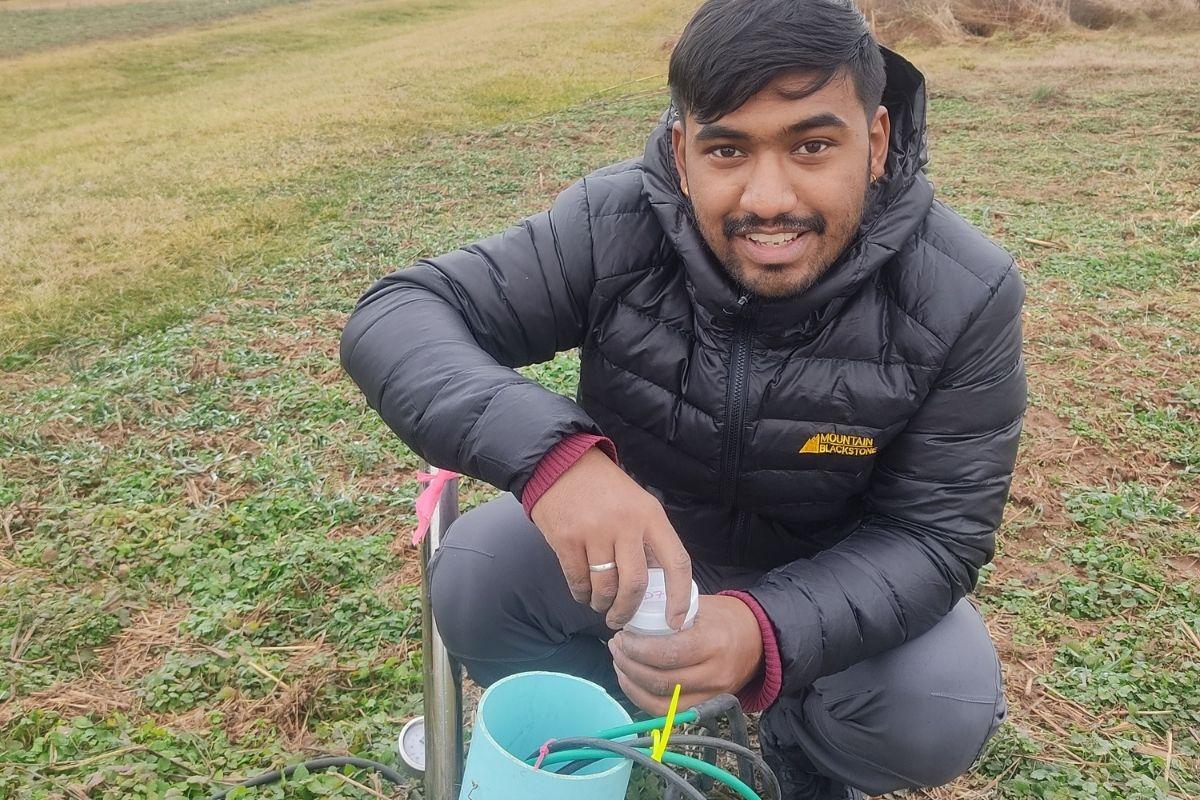
Binaya setting up his instruments
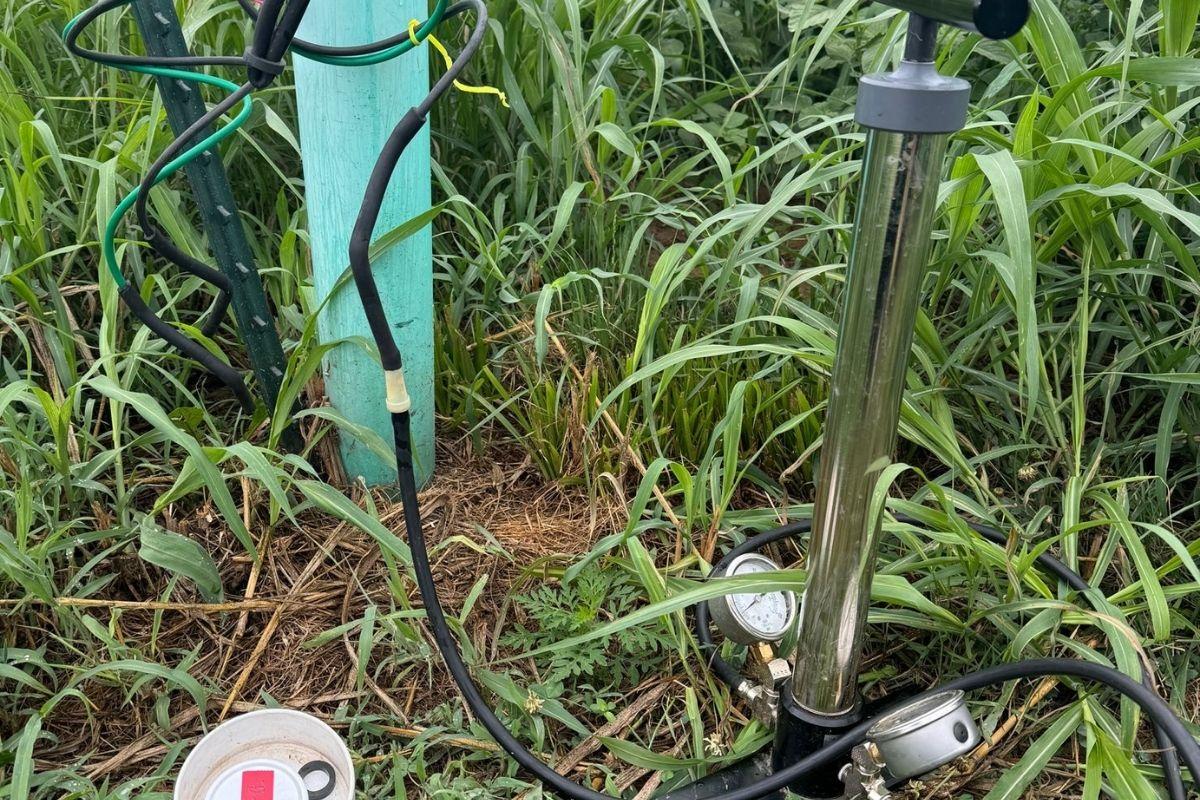
Instrument set up for sample collection